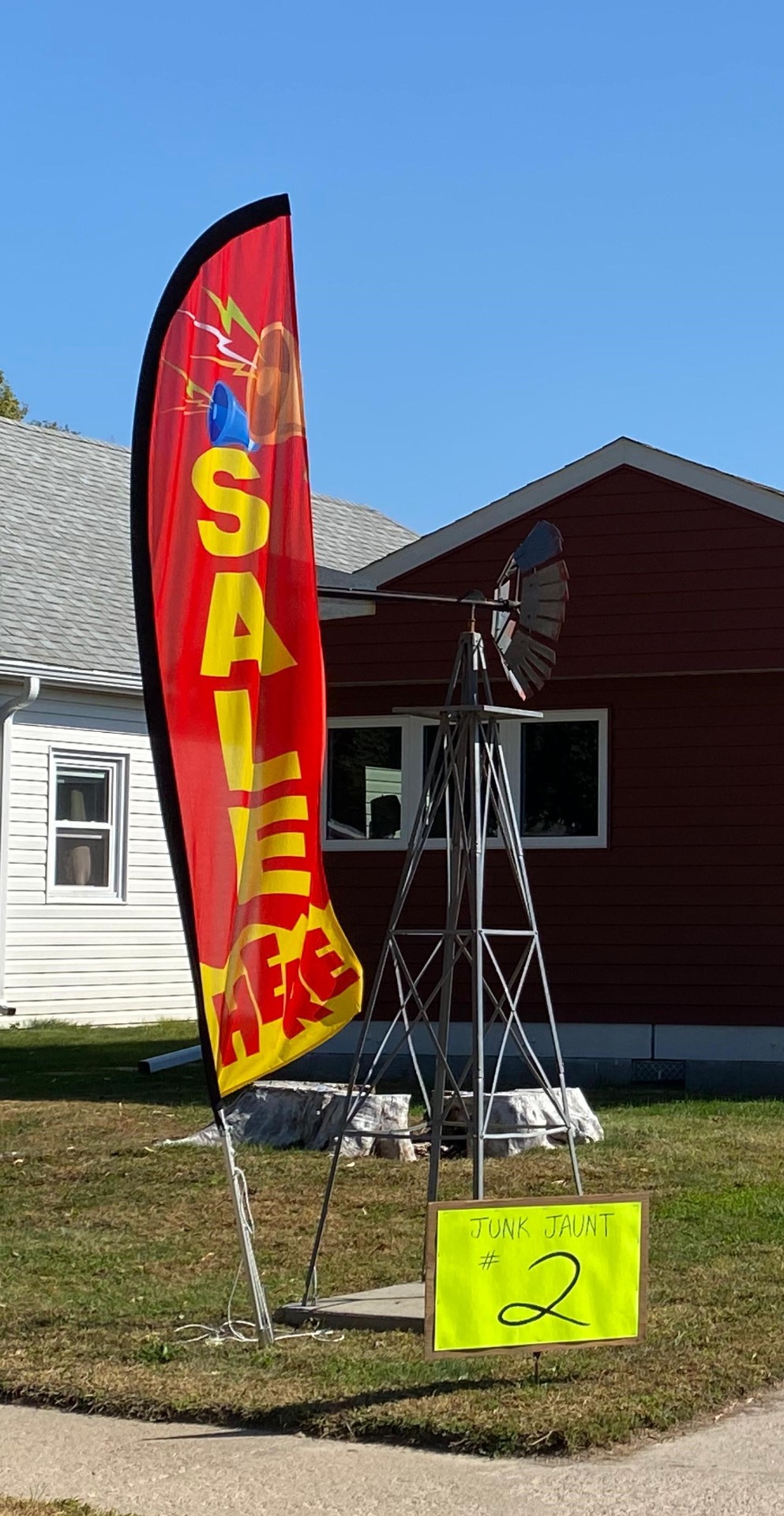
~ Nebraska's JUNK JAUNT - 2025 ~
For some years already, on the last weekend in September, there is a published "loop Junk Jaunt route" in central Nebraska of 1) "garage sale-type stops" at homes along the route in the country & in towns, 2) at local antique-related businesses, and 3) at "flea market"-type gatherings at rodeo or fair grounds or another large space in a town.
On the hunt for the historical preservation of our grandmothers' home baking-related artifacts
for the National Bread Museum of Grain-Baking-Bread Culture!
Getting on the road by 7:30 a.m. from Norfolk, at 9:00 we got to our first marker of the day (not the "#2 SALE" in the above photo), & for the next 11 hours we checked off all the yellow stops we saw along maybe one-fourth of the Junk Jaunt route, ending in Broken Bow. It was fabulous to once again be in the country! We drove down roads through thousands of acres of flat fields as far as the eye could see of corn, soybeans, & some other crops. The country life always takes me back to the memories of my first 18 years of life on the farm. So journey along with me & see what home baking-related artifacts were one person's junk (or just no longer used or needed) and became a treasure from this part of the country, the prairie land & the Midwest Grain Belt, for the preservation, memory, and gratitude of our grandmothers' lives (& Grandpa in the fields & farm).
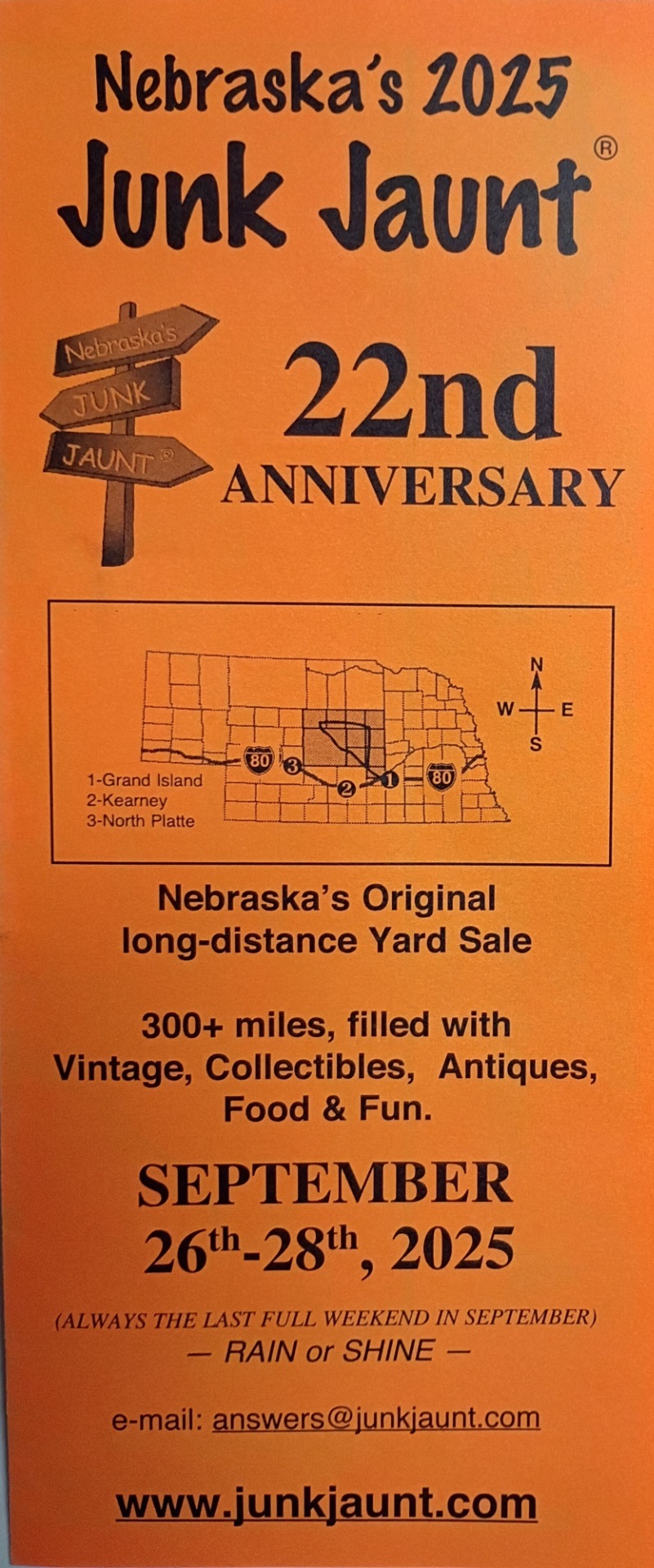
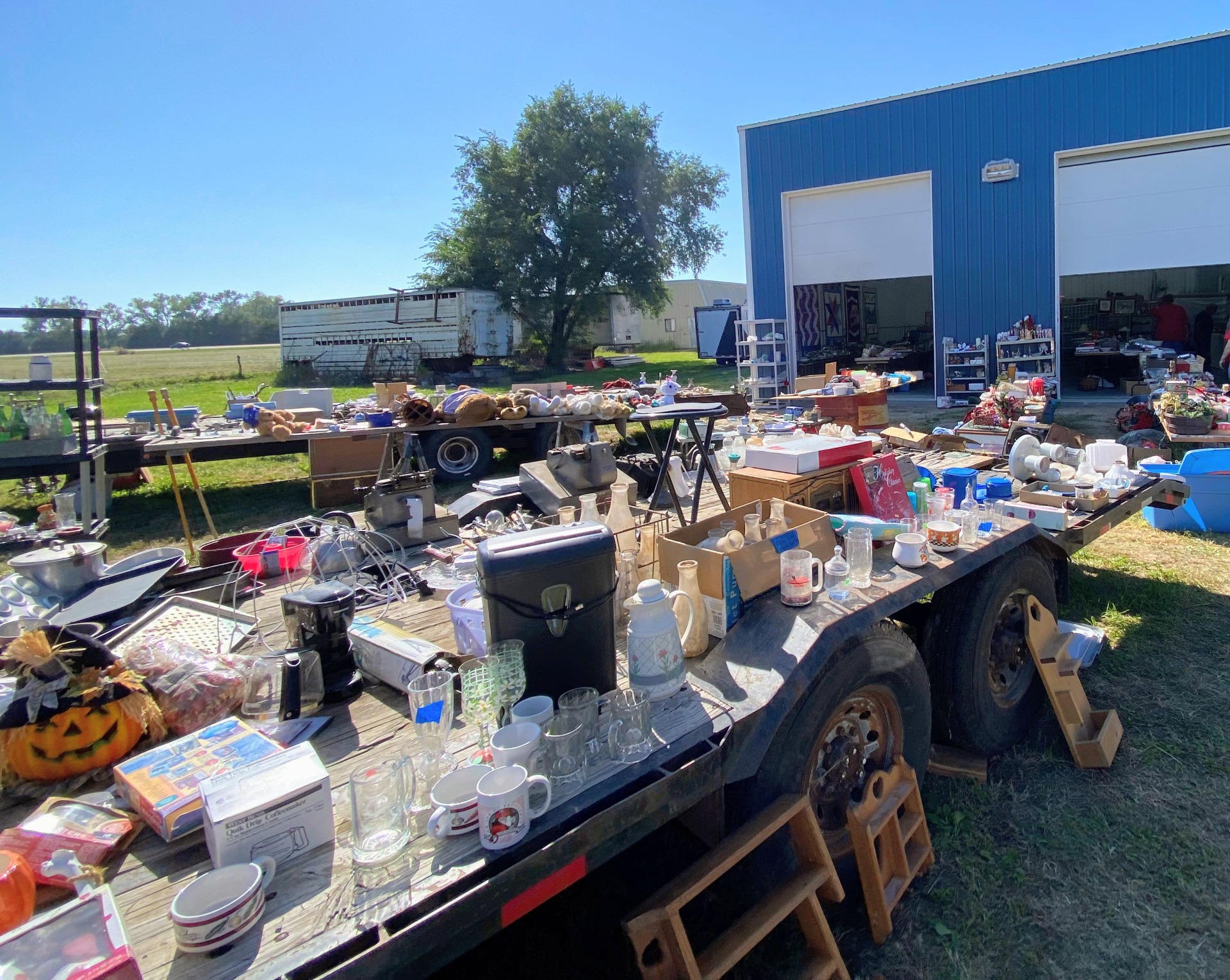
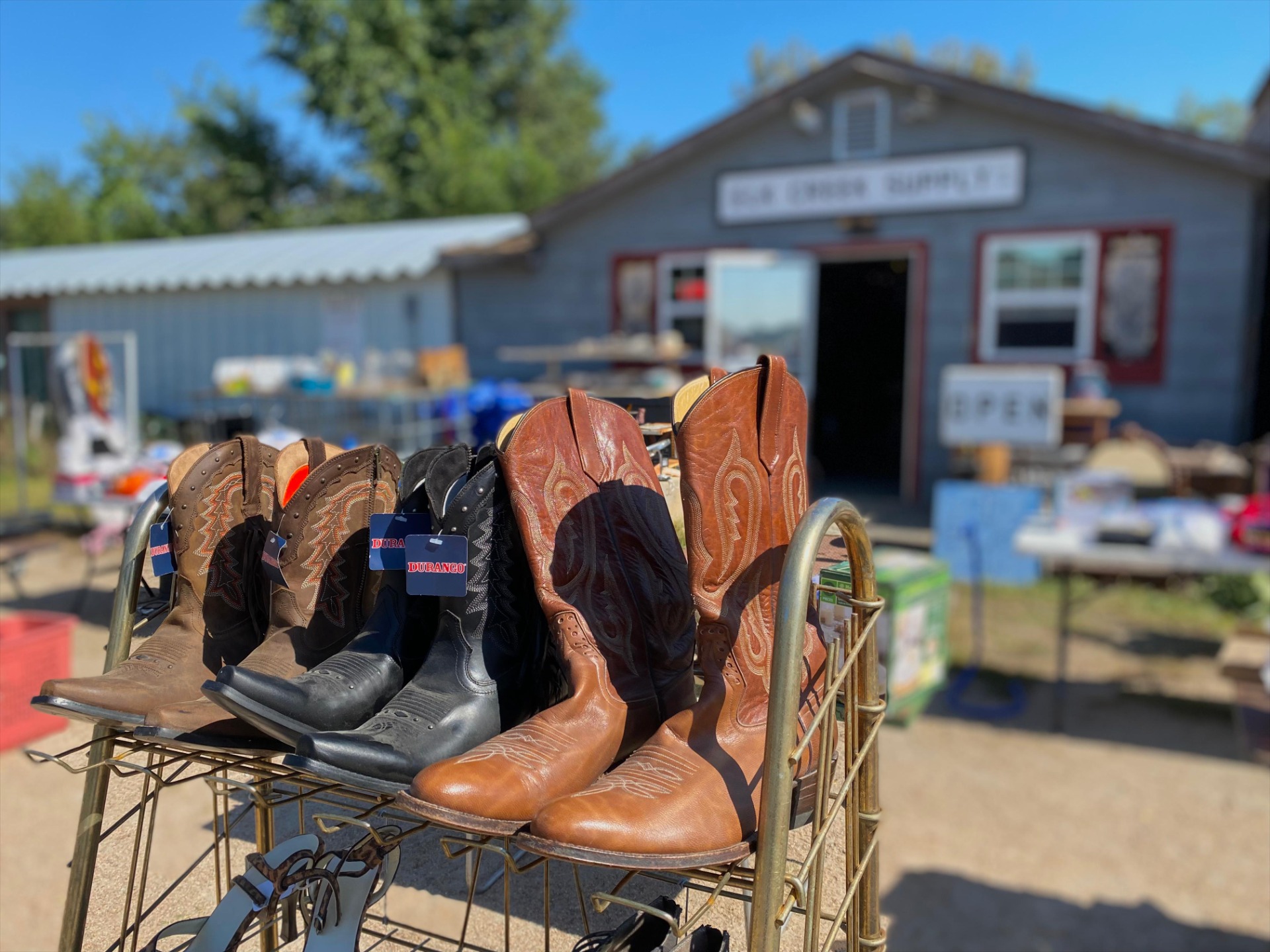
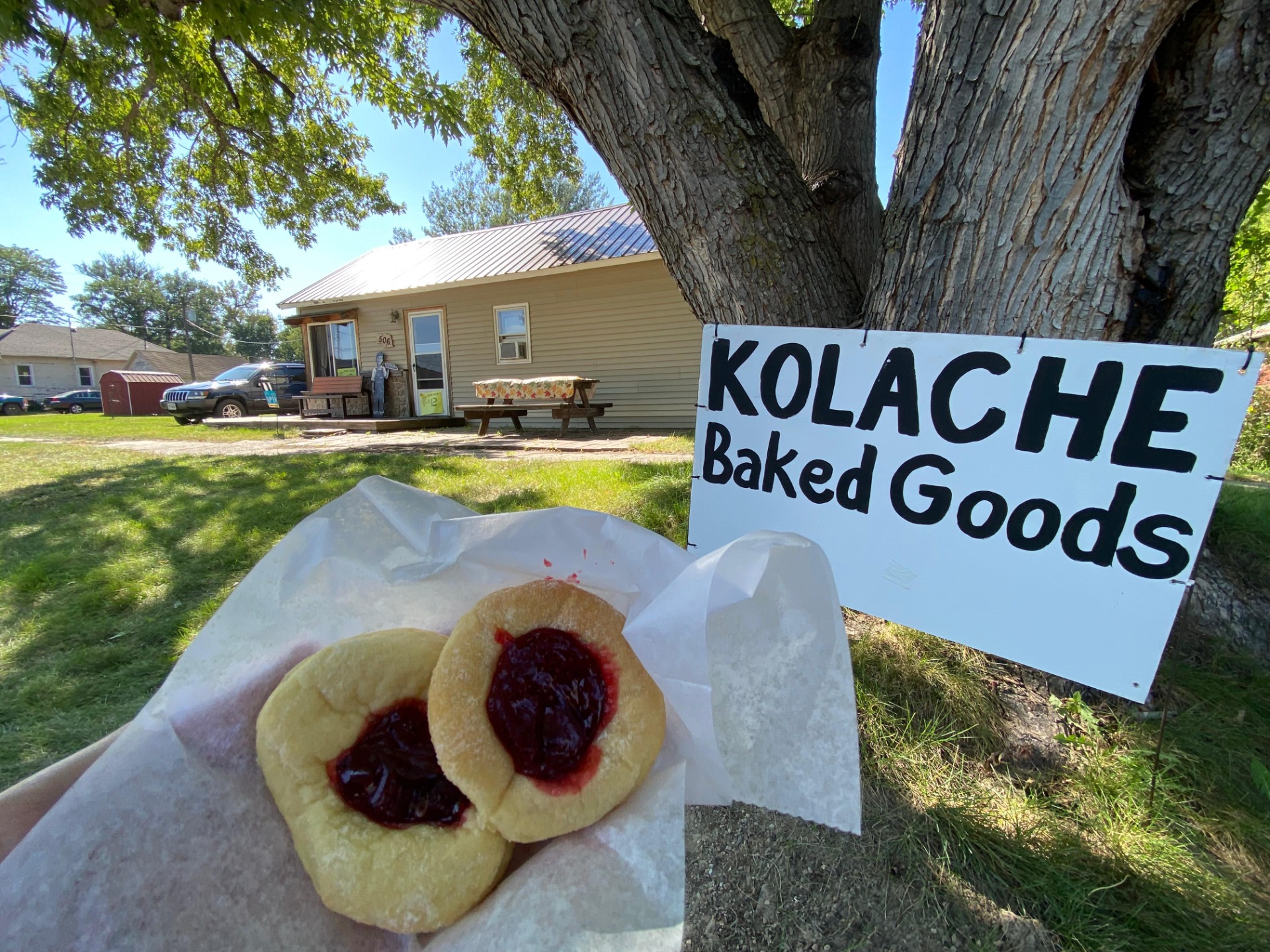
A
Antlers
Two guys were sitting by these buckets of antlers, & I had never seen so many at one time! Three other family members were nearby, and I jokingly said to all, "Now, how can I justify buying some antlers in relationship to our grandmothers' home baking artifacts?"😂 And then it dawned on me & I said, "I know. In Germany there's a cookie named Springerle (had to explain & a few nodded), & I said that in the old recipes, one of the ingredients was 'Hartshorn,' which is ground up antlers!"🙄😀 (I've since found out it's from the male, i.e. Stag or Hart, red deer species. In the U.S., some are in a game reserve in Texas.) Hartshorn is also called "baker's ammonia" & was the rising agent in dough prior to the creation of baking powder in the latter part of the 1800s. In my 1980's Springerle Cookie recipe from Caroline Kallas (dec.) who created and built House-On-The-Hill which sold the carved cookie molds to make Springerle, there's 1/2 teaspoon Hartshorn to the 6 eggs, 6 c. of powdered sugar, 2# box of cake flour, etc., etc. for one batch, & you need to dissolve the Hartshorn in milk for an hour before starting! (The antlers were $1 a point to = $8. The guys told me how to measure a "point." If the antler is more than 1" diameter where the point was growing & it's broken off, you count it and pay for a point. Therefore, you choose your antlers accordingly.) (Click on the photos to view larger.) (Town of Taylor)
Learn more here: https://en.wikipedia.org/wiki/Hartshorn
B
Baskets
This is generally known as a strawberry basket because it was the common container in which to sell a quart of strawberries. The average and most common berry basket is a quart size. These two are more unusual in size. It doesn't look it, but the left (3 photos) is a pint (half quart). Made of wood veneer (an extremely thin layer of wood); this has the old narrow tin rim. (4 1/2" sq. x 2 1/2"; $1.50) (Click the photos to enlarge.)
The right (2 photos) is a 2-quart with a "nailed" rim, but actually stapled. (6 3/4 x 10" x 4"; $2.10)
Beer Box ~ Bottle & Beer Can Opener (Storz)
At a prior Junk Jaunt stop, I bought a Storz beer (1876-1972) can opener! I remember the company from the years when we first lived in Omaha. What drew my attention & seemed so odd to me was "The Orchid of Beers!" Really? The flavor(??) of a flower, & an orchid at that (!!) for a beer? I don't drink beer, but still . . . the seller, ML, told me that he got it from a guy who dug it up during some excavation, & it still had those tell-tale signs of proof!
(5 1/2" x 8 1/4" x 5"; a gift for this history story) Bottle & Can Opener (4 3/4" x 3/4"; $ .50)


Goin' Along
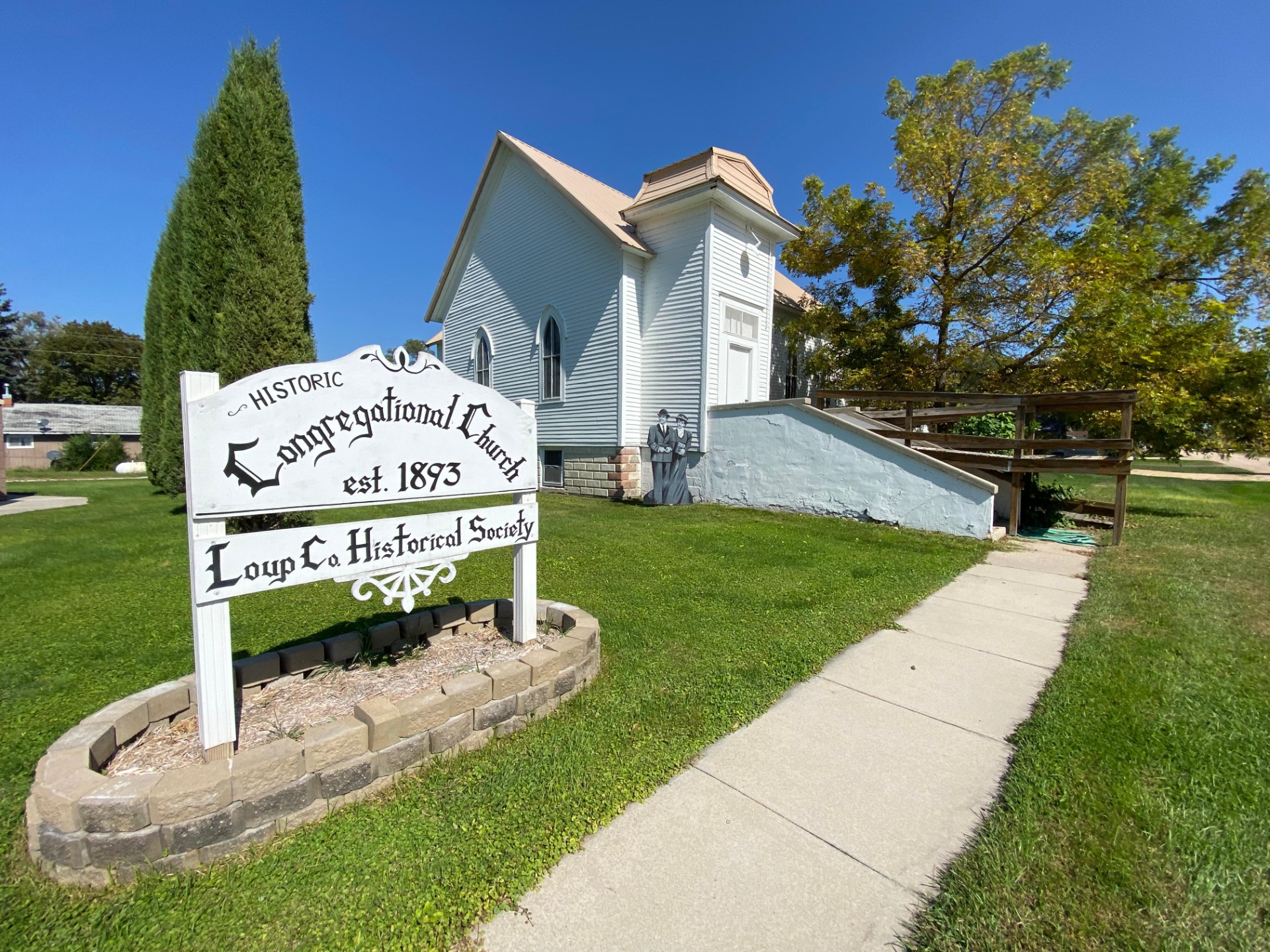

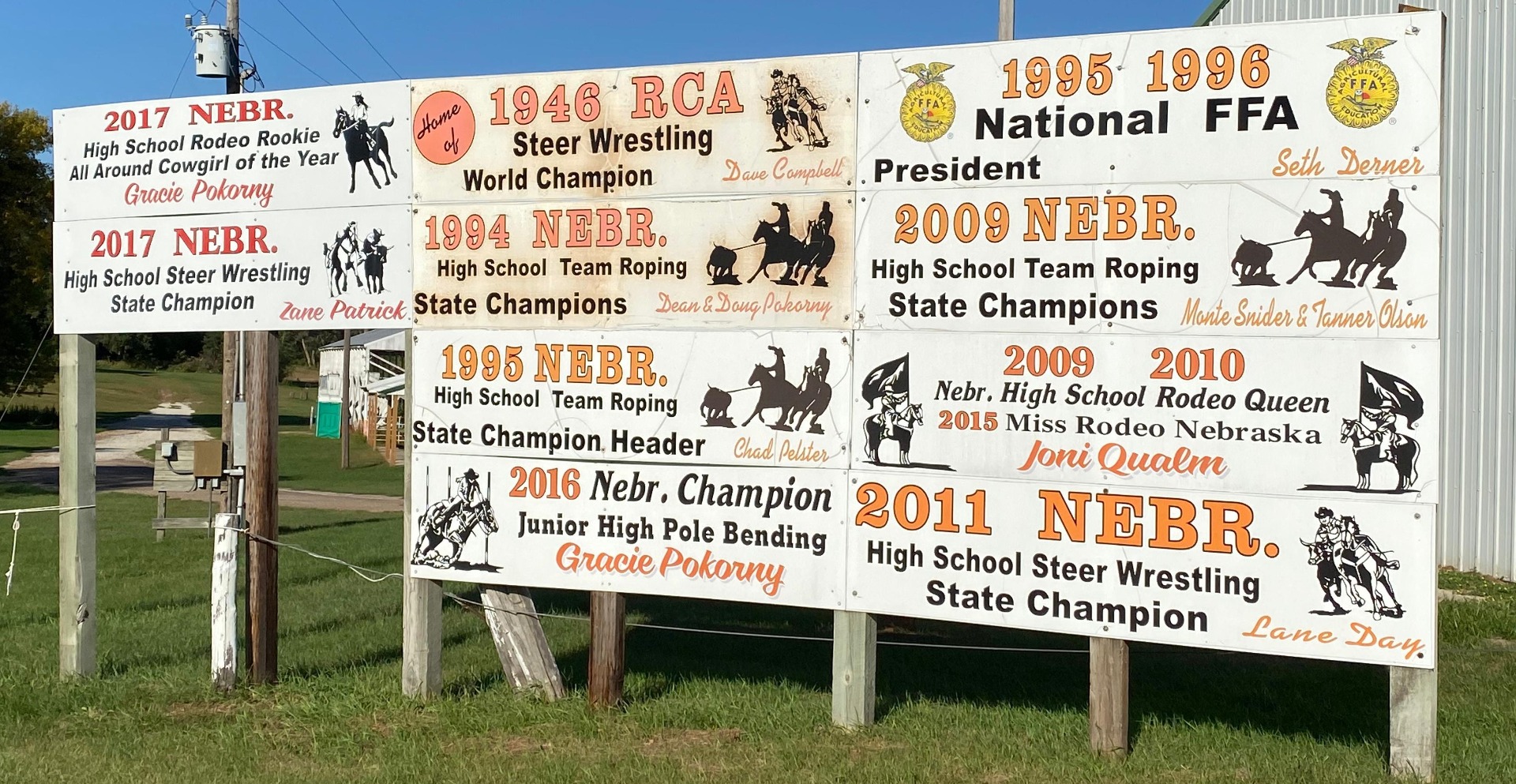
C
Cabbage Slicer (Kraut Hobel) ~ Kraut Stomper (Krautstampfer) ~ Preserving Cabbage by Making Sauerkraut
I have so many Kraut Hobels from Germany in the National Bread Museum collection, that I do not need another
(I keep saying!). But having to check everything out😉, this is the first one I've ever seen with information written on it in my half-dozen or so from the U.S. And Joe's sign said to make an offer because he had to clear everything out. So when I asked about the "Kraut Hobel," I knew he'd be curious as to what I was talking about. Seeing I meant the old cabbage slicer, he immediately said, "How's $2?" - - - and of course I said that was fabulous & I'd help him clear one more thing out! Then I realized I should have taken a whisk broom with me to brush off dried dust & dirt from these old things dug out of the old sheds! And take a look at the back side . . . the blades are hooked together with a bar you adjust with the wing nut & screw (rusted together today) so that you could adjust the thickness of the cut of cabbage. (9" x 27" x 3 1/2"; box 7 3/4" x 9 1/4" x 3"; $2)
The Kraut Stomper is from my 1988-91 Germany years & was at hand to photo with the Cabbage Slicer. (5"rd. x 29")
This site tells a pretty good overall process (whip past the ads): https://practicalselfreliance.com/sauerkraut-crock/
The 2nd photo in this link shows a man using the above Kraut Hobel:
https://deeprootsathome.com/step-by-step-traditional-basic-sauerkraut-in-a-crock/
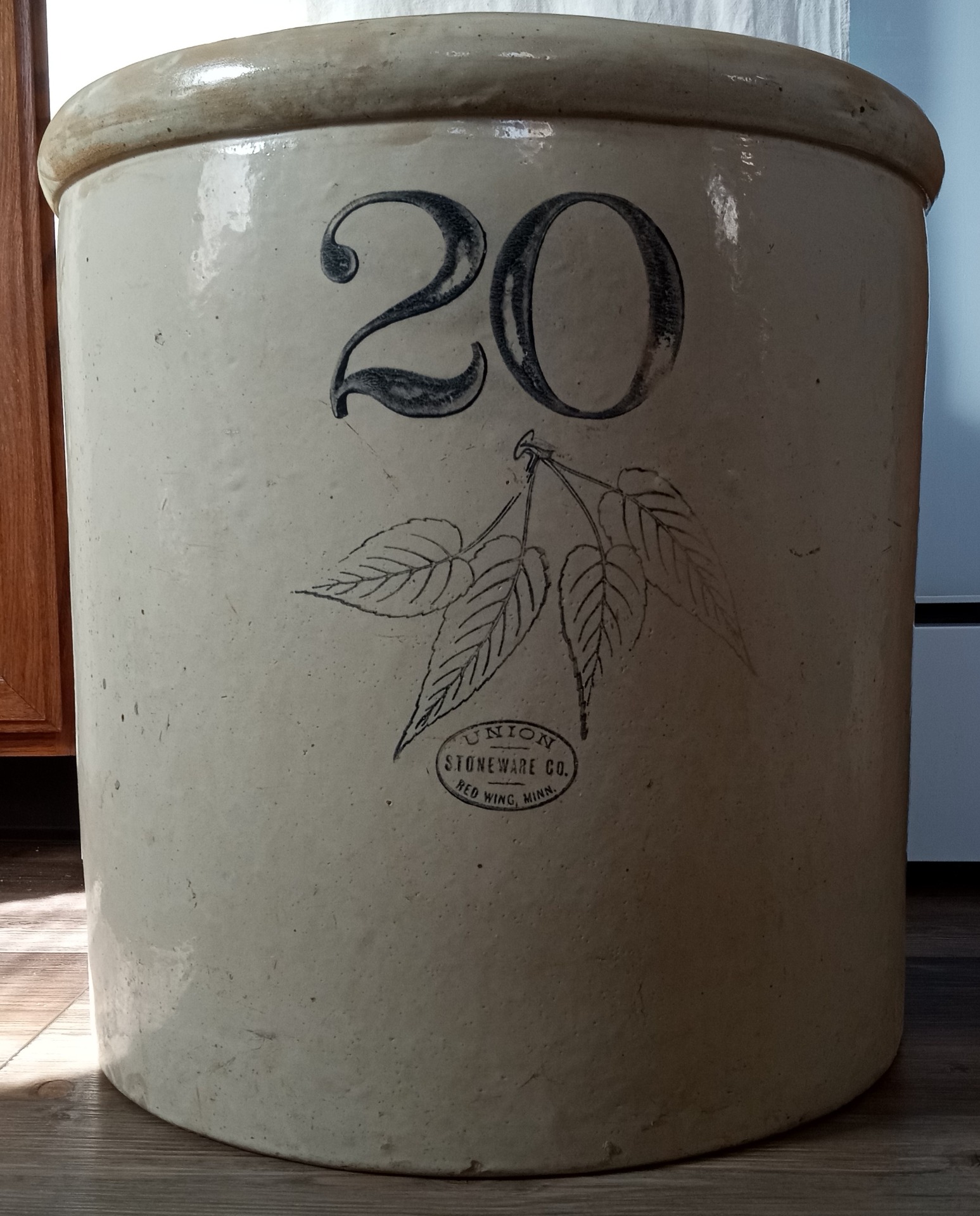
And it just so happened that my traveling partner has been on the lookout for the old crocks - - you put the cabbage in with some salt [spices optional], etc., weight it down with heavy plates or other means, stomp it down however the recipes tell (therefore, the need for a "stomper" like above in the olden days), & through the weeks/months, it will ferment. On the farm, the crocks were kept in the cooler-to-cold-temp cellar.
"20" & "4" are the size in gallons. The Red Wing Stoneware Co. had both the Birch Leaf & Red Wing logos. The going price is to pay no more than $10 per gallon if you can find these at that price. These were a bit better than that "good price!"
Cake Molds & Pans
Can Opener
EKCO USA; was a red painted handle with yellow, green, & white rings;
(6 7/8" x 1 3/4" x 3/4"; In a $10 bundle of 16 items.)
Canister - Blue Enamelware
In memory of Jana ~ her Graniteware, wood knob & screw handle canister; Quite used, i.e. loved! Made in the 1950's-1980's; Seems very unusual because 99% of the metal canisters & other kitchen items were always decorated with a solid-color background and a design of some sort, or animal, flowers, etc. painted on it to make it attractive in those days. Harper Ransburg began the company in 1911 with glass, & then went to stoneware in 1931, & then to metalware in 1933. He died in 1963 & the family sold the company in 1967, which was continued until the 1980s. Maybe this was one of the later ones ... (6" rd. x 7 3/4"; $ .50)
Canning Jars ~ Covers & related
1) The first is a white ring with a glass "Atlas EOJ Seal" lid; the 2nd was a new company to me: PRESTO. glass inset in the metal cap/cover. The only cover for sale, but the man even had some PRESTO glass jars for $5, & I now should have gotten one! . . . in hindsight!! ($1.00 for each of the 2 covers.)
2)The very large-diameter, heavy-wire jar ring & wooden handle - or maybe for a small pail, bucket, jug or other container of some sort?? Handmade/hand wrought; (6 3/8"rd. x 5 3/4" high; in a $10 bundle of 16 items)
Cherry Stoner; Pat. Mar. 3, 1903; No 118 - 2984 (4 other Pat. #s on various parts)
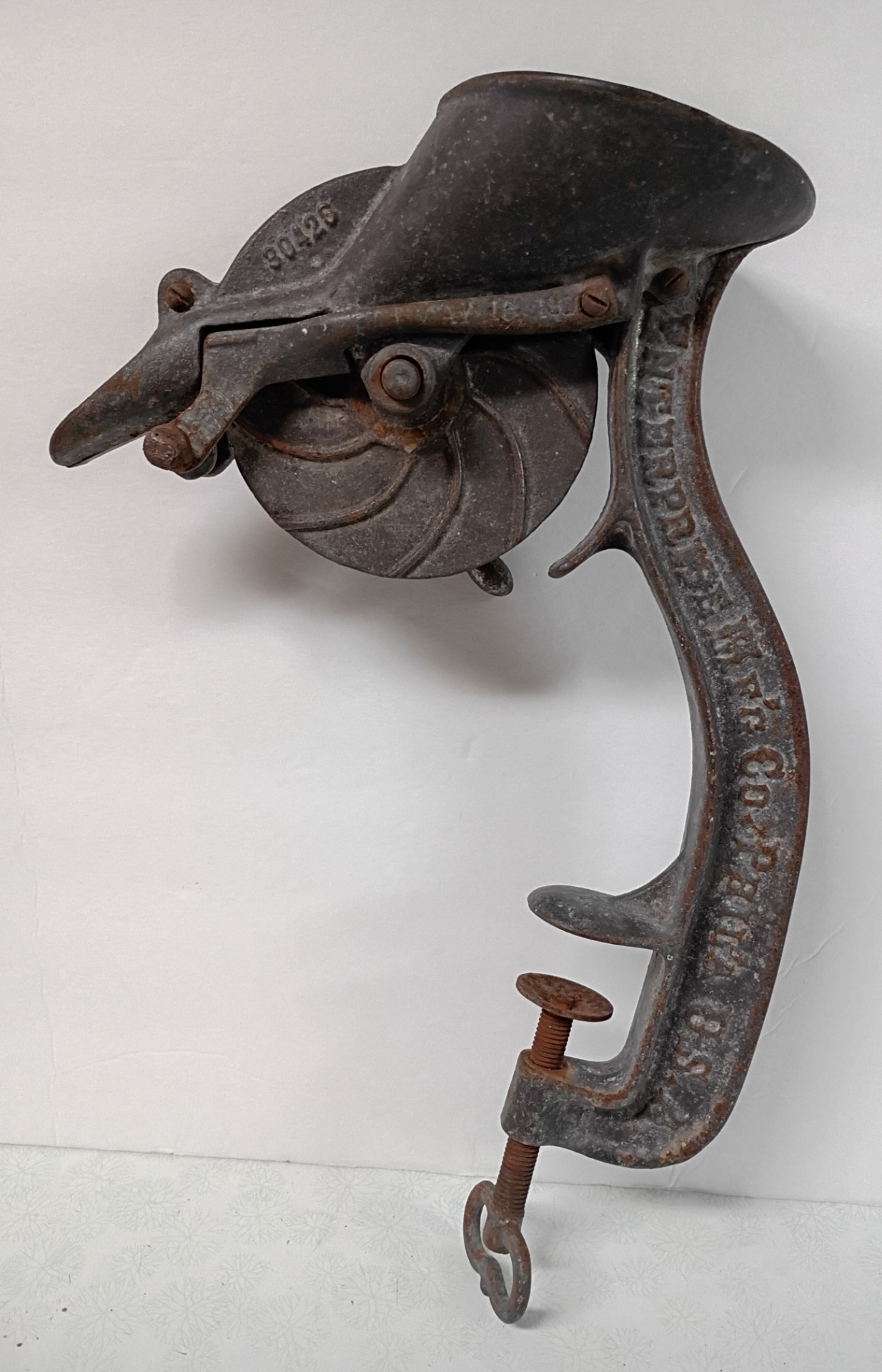
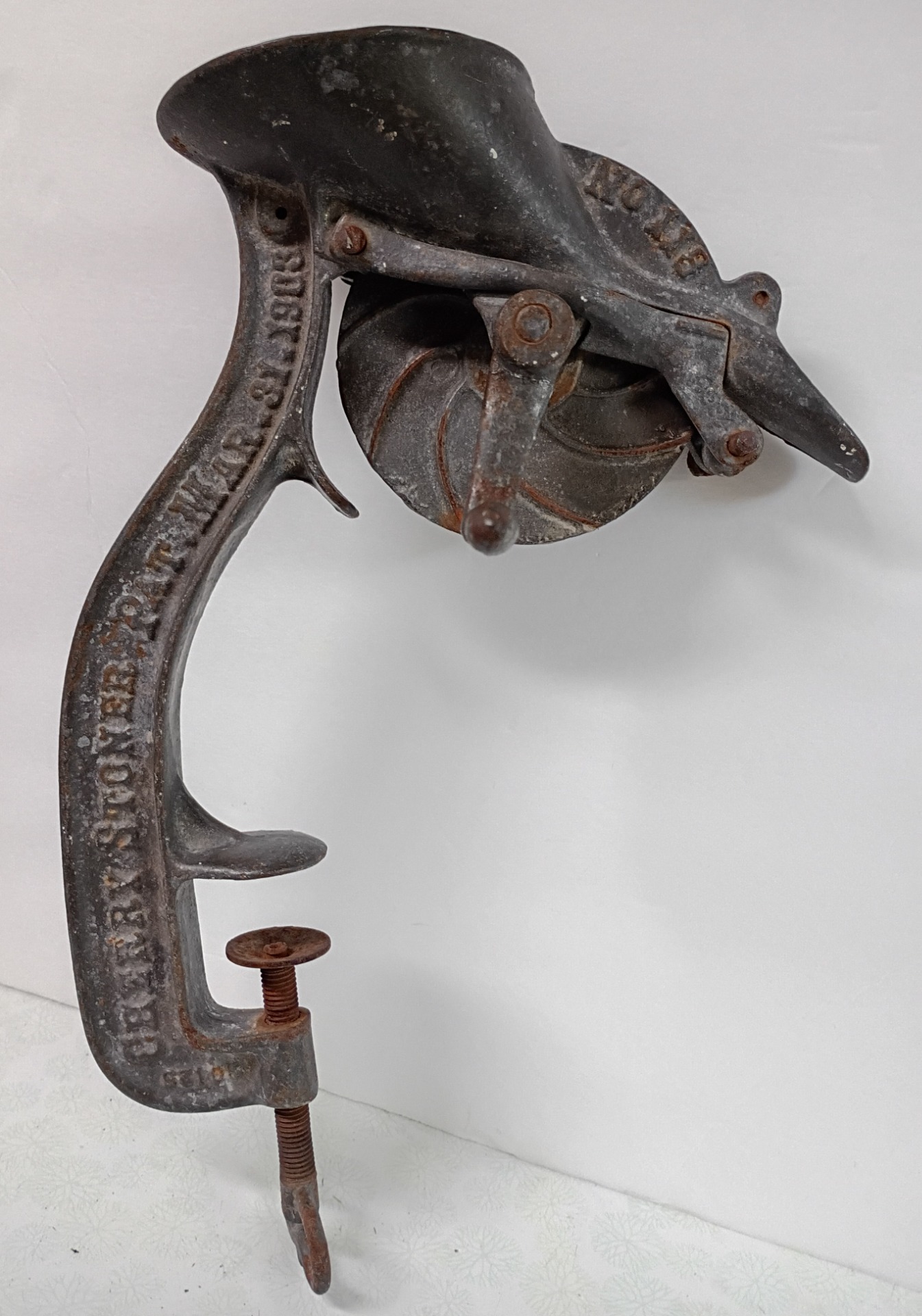
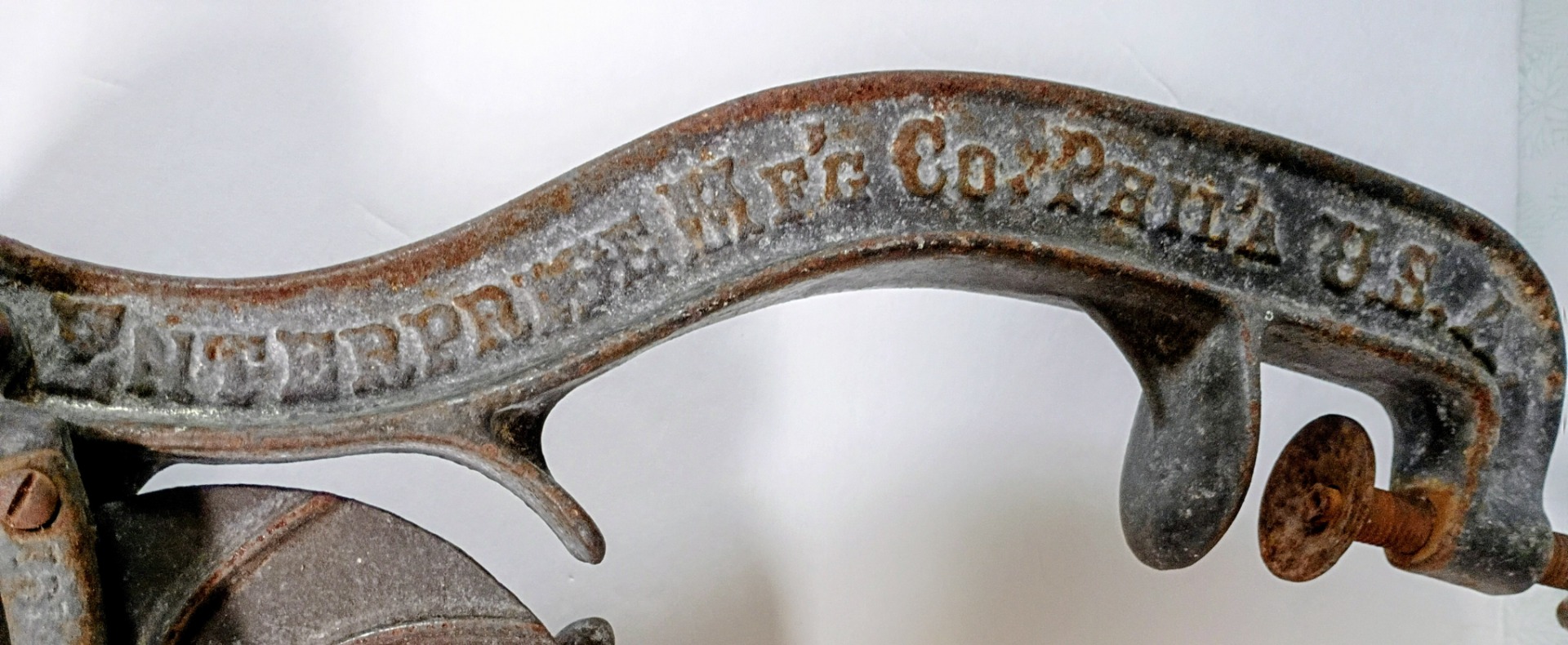
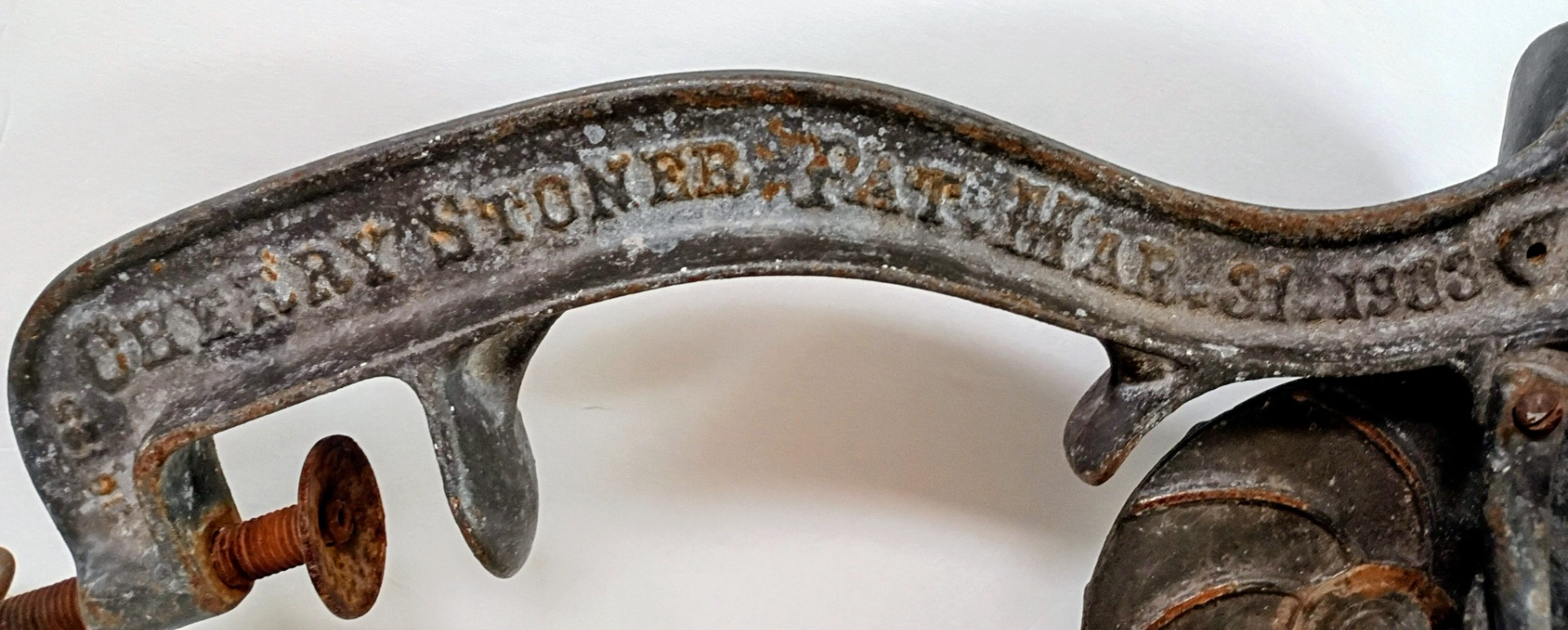
Child's Baking Pans or Baking Tins
Copper Pan, Turkish; Bags of Wine Bottle Corks

Cutter ~ Biscuit or Cookie: In Europe (especially England), what we call "cookies" are called "biscuits," but when we say this is a "biscuit cutter," we're referring to the age-old, common, "Baking Powder Biscuit😋," and that is not a cookie😉. It's the biscuit that you get at Kentucky Fried Chicken. Growing up on the farm, Mom made these for breakfast 50% of the time, eating them with butter & honey or jam, many times a bowl of Jell-O with bananas or shredded carrots, & a glass of milk or home canned grape juice.
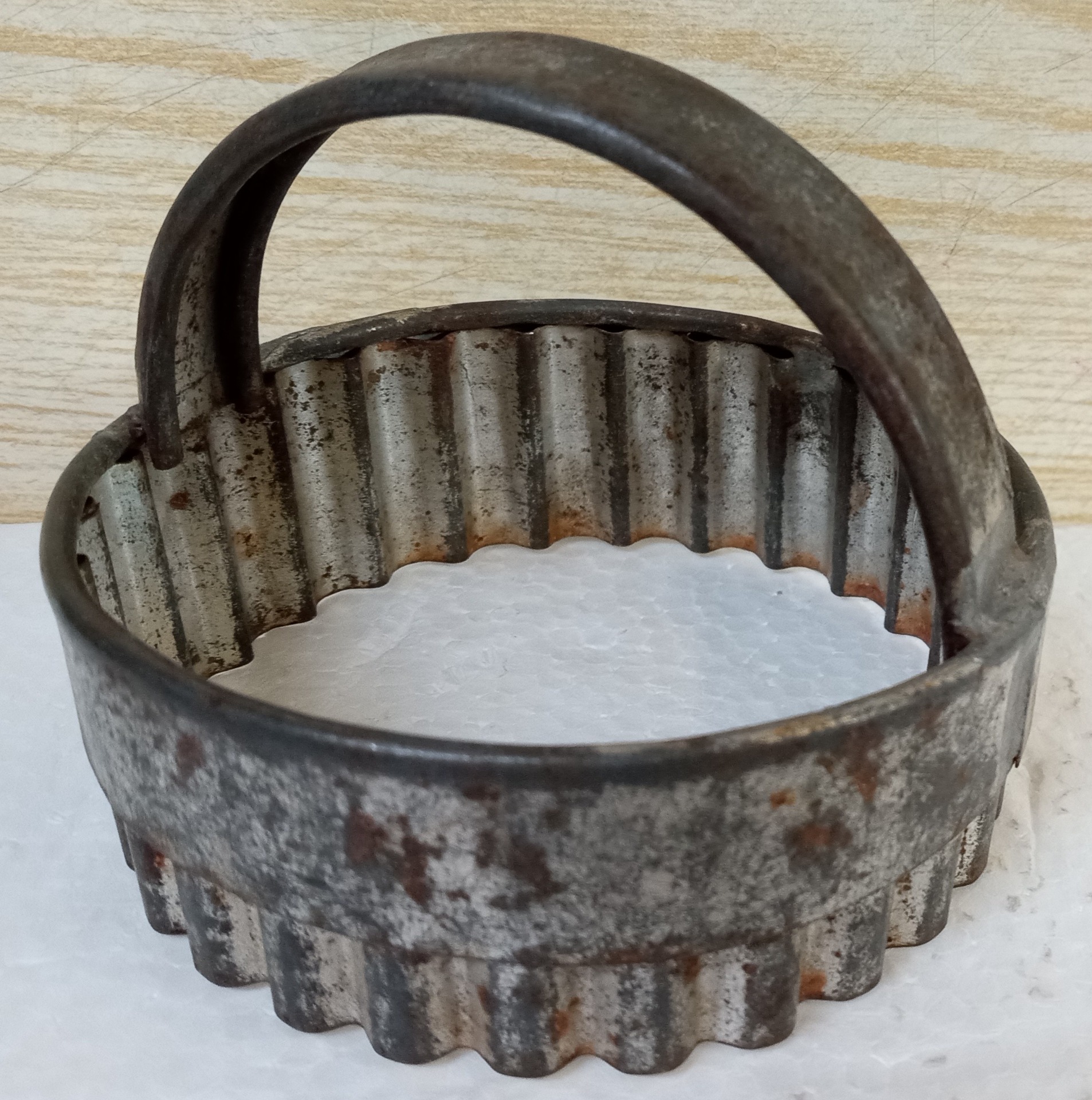
This style is usually categorized as a biscuit cutter with handle. More specifically, "scalloped, pierced tin with a heavy duty strap handle." It was already sold in the late 1800s - early 1900s. With no markings, a person needs to judge according to knowing the metal it's made out of, and the wear, but many elements can attribute to that, so these kinds of cutters can be newer than older, or vice-versa.
On the website I'm posting, there is more than enough cookie cutter info about what these have been, & sometimes still are, made of: steel, tinplate, tinplate steel, stainless steel, copper, aluminum, & various kinds of plastic.
This shape of a biscuit cutter is also common in sets of 3 or more, with & without handles. When they fit inside each other, it's usually called "nesting." (3" rd. x 2 1/2" tall w/handle; $ .25)
https://elevatingkitchen.com/what-metal-is-used-for-cookie-cutters/
~ Moving Along ~
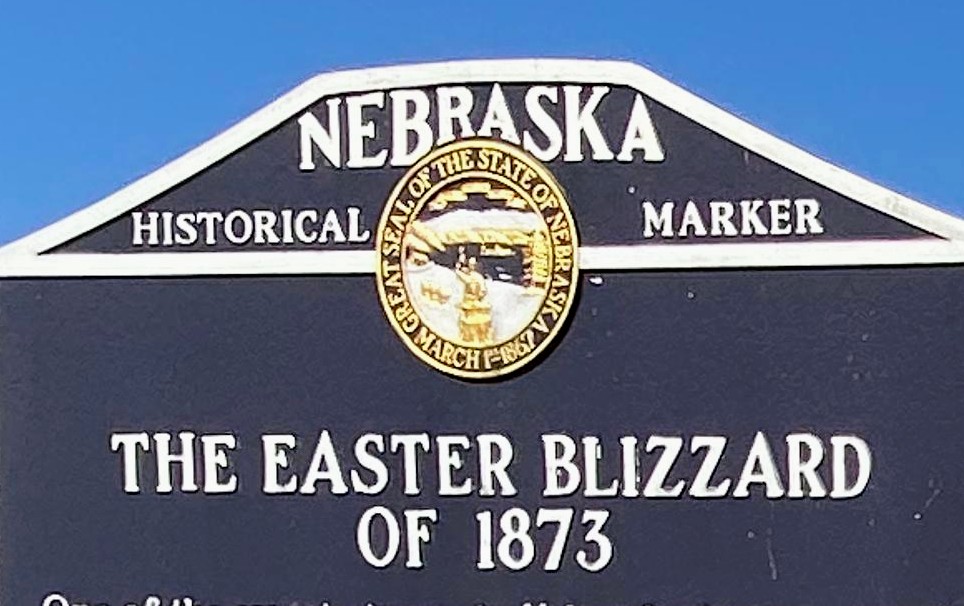

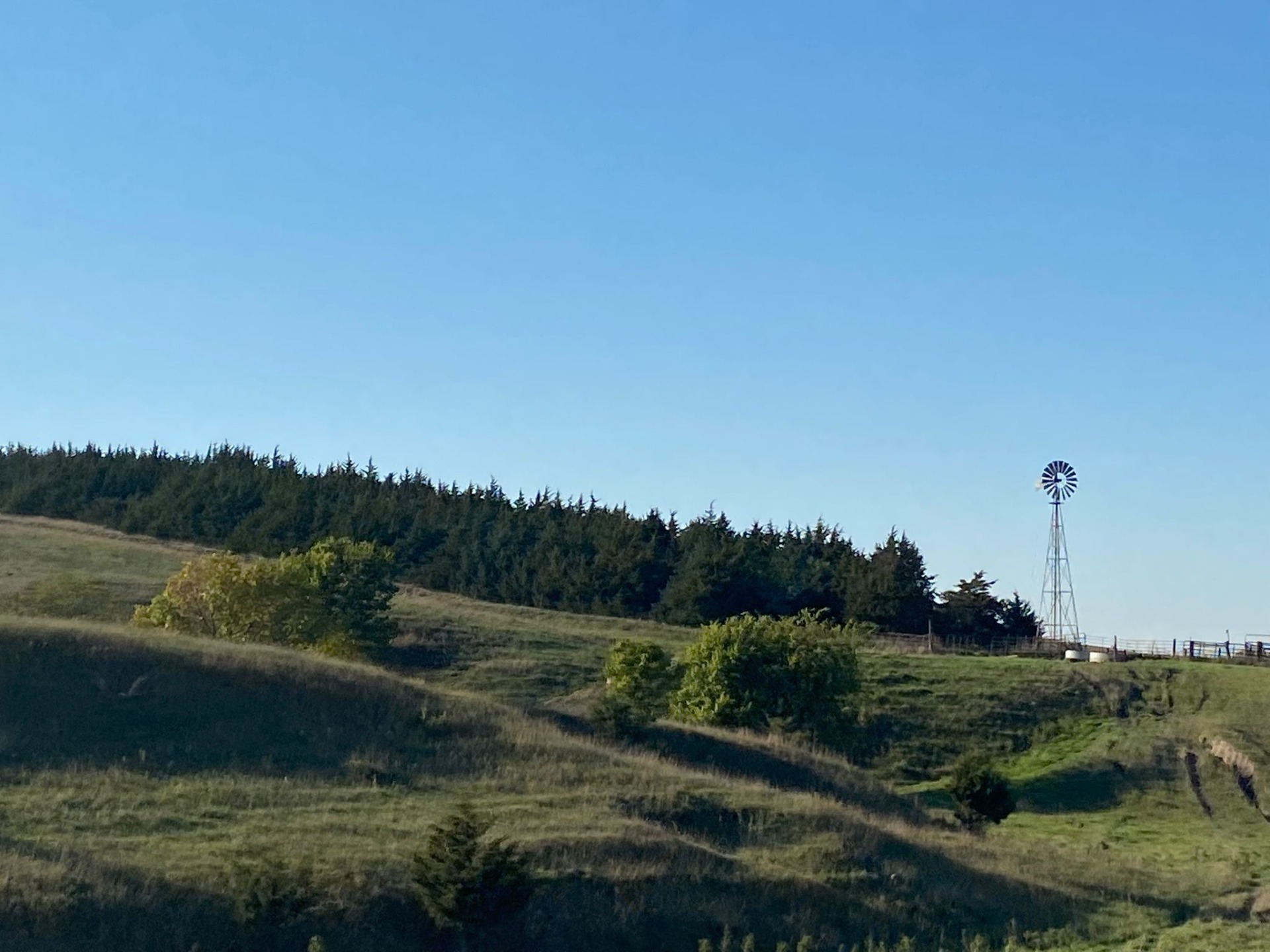
D
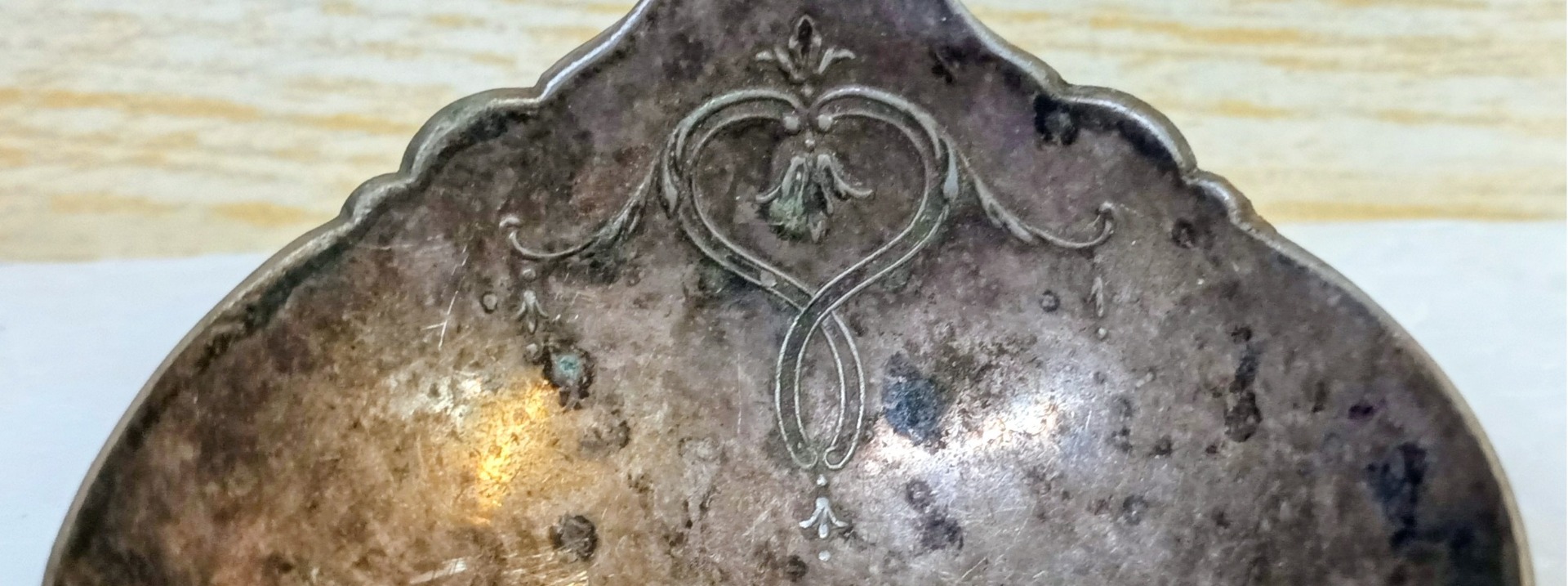
Dipper or Ladle - Which is it?
And which is the strainer?


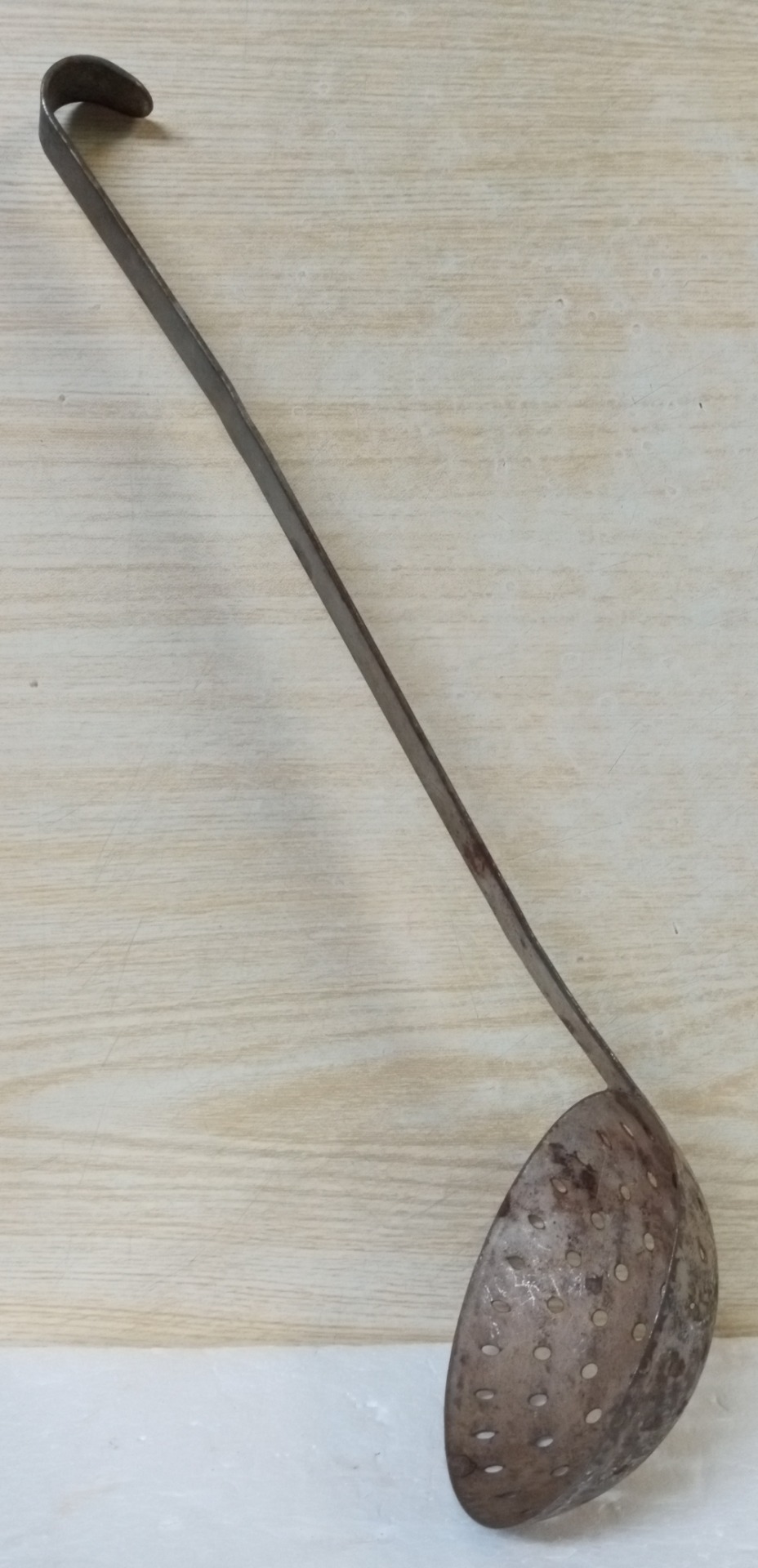
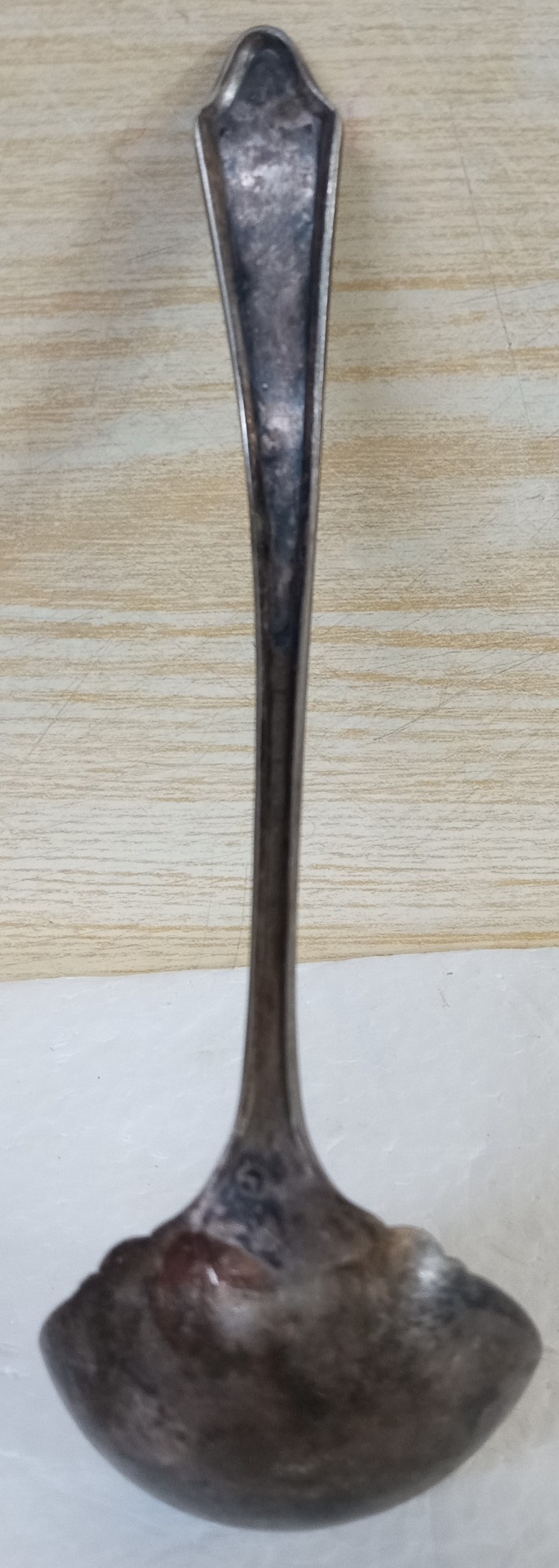

I grew up with people calling the larger "scooping items," with a deeper "bowl," a dipper. The more shallow utensils, like for use in a gravy boat, were called a ladle. Then again, the angle of the handle to the bowl may determine the difference, or the length, &/or the size, OR when it comes down to it . . . the family jargon & the part of the country you live in becomes "the way" all the "scooping" items are identified! In one of my best sources it says generally ladles are larger than dippers. Really? I always thought the opposite!
Donut Maker (advertised as automatic vs. hand-cutting, rolled-out dough)
E
Egg Whip


There can be loads of whips, whisks, beaters, stirrers, spoons, lifters, flippers, & what-have-you in your kitchen drawers or containers on the counter. And each one has specific descriptions according to the manufacturers' names, and the "Kitchen Collectibles" manuals we have as resources today.
Also, each one can command a "pretty penny" (the former lingo in the days-gone-by when the penny meant something), within the so-called "antique" market today. (You do know that an item needs to be 100 years old in order to claim the title of "antique?" -- Right?? So today people have come up with the words of "vintage, collectible, rare, unique, old, yesteryear, days-gone-by, etc." to claim some sense of a period of age and past time, and availability.) Patents for this were the late 1800s - early 1900s. A similar new whip was 5¢ in the 1895 Montgomery Ward catalog.
One of my best sources of learning the details of each of these home-baking artifacts is Linda Campbell Franklin's editions of 300 Years of Kitchen Collectibles. For instance, the "coiled wire 'cross cut' pattern, with a (used to be) painted red wood handle" egg whip/whisk pictured here is within the family of "chicken wire, diamond, closer-woven wire called checker, coiled spring, wire-lacing holding springs, & criss-cross springs for the cross-cut pattern," . . . all forms to describe the "wire weaving" of just this one type of kitchen tool to whip an egg or the egg white! And then the outer rim can determine shapes of "flat, spoon, or pear-shaped," besides the wood or wire handles which also have various descriptive names! So with all that history in our grandmothers' lives, each one becomes a treasured keepsake of gratitude to someone's life❣ (3" x 5" oval of the 11 1/4" length; $ .65)
~ Chugging Along ~
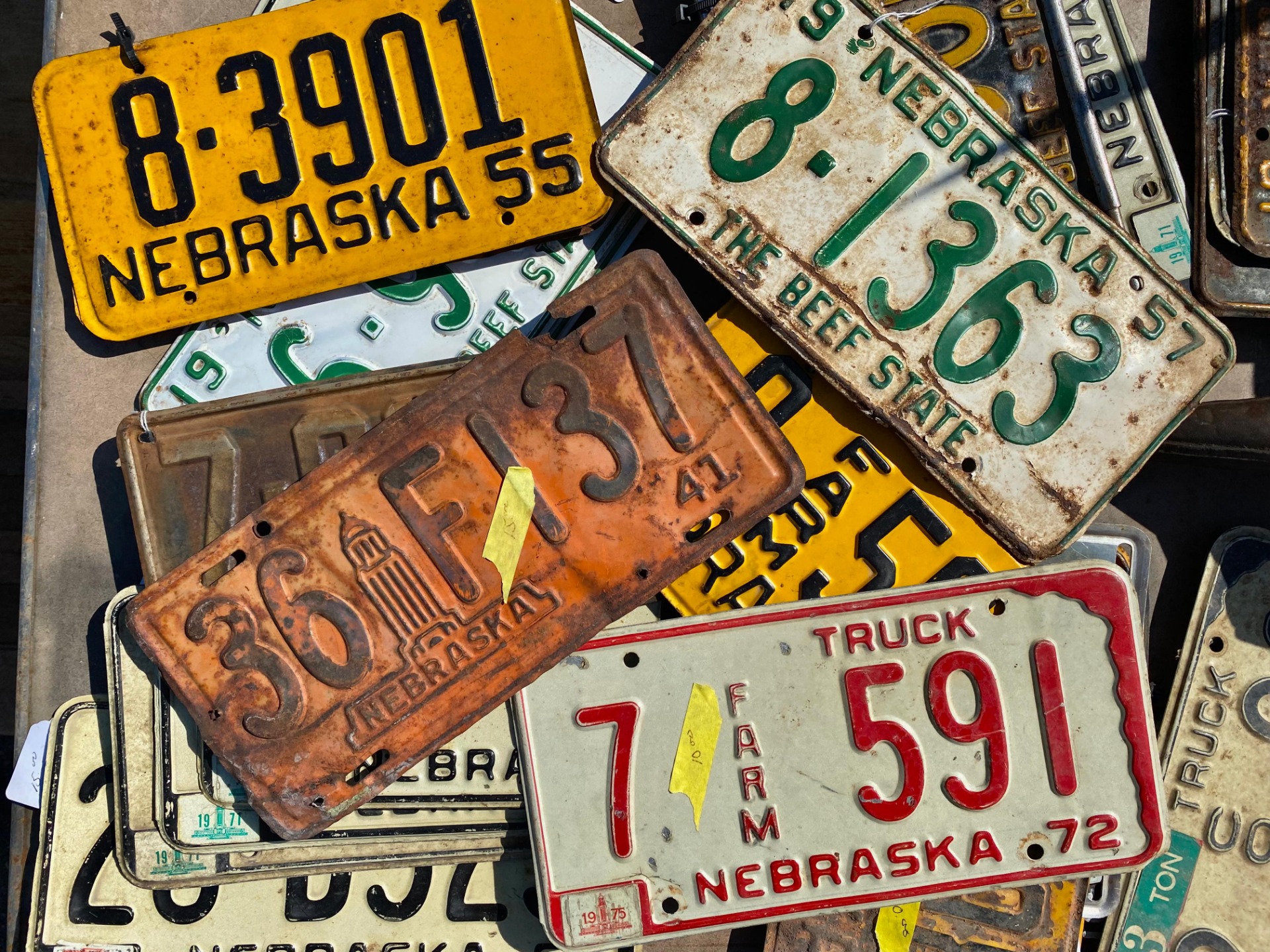
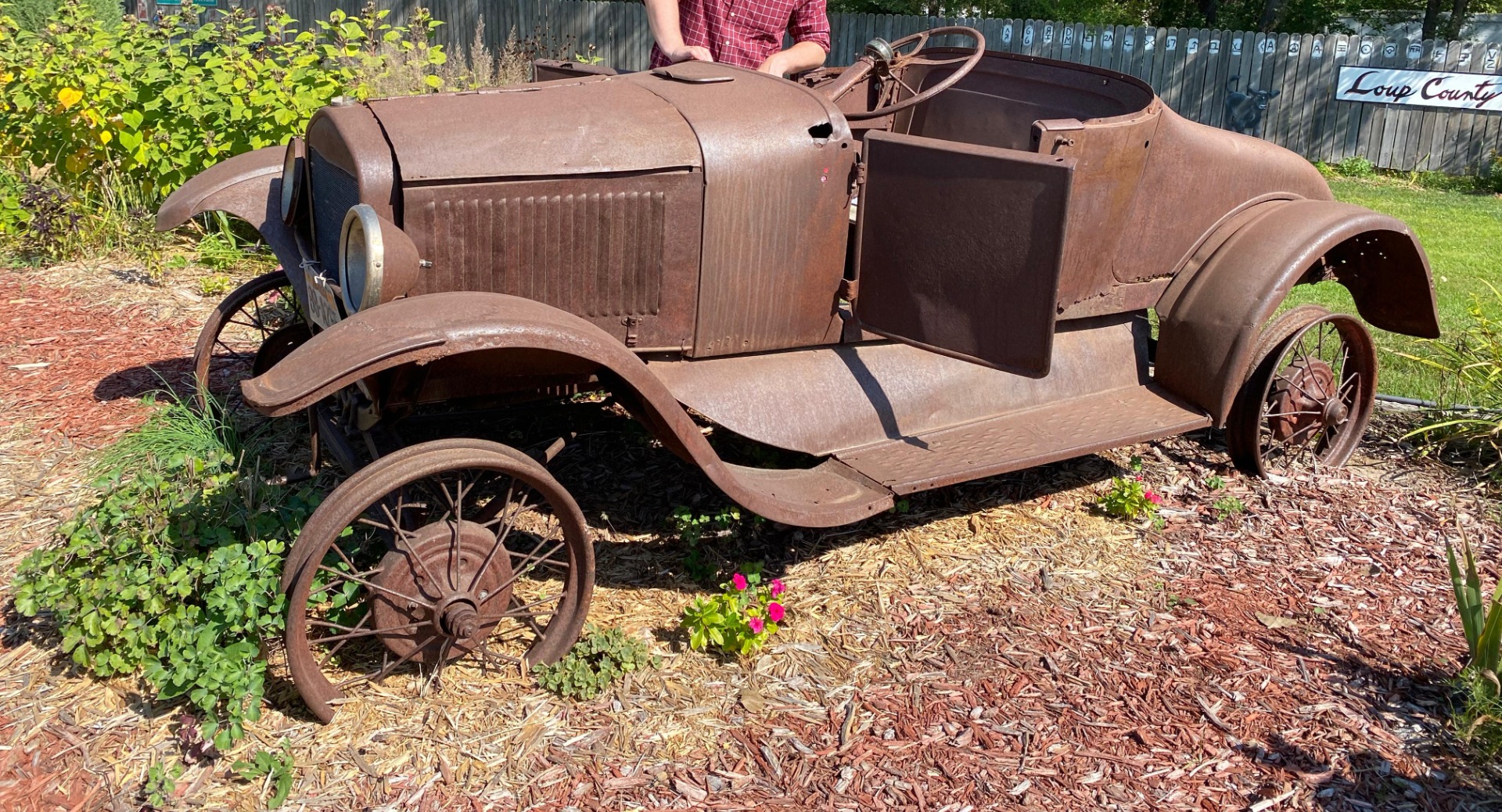
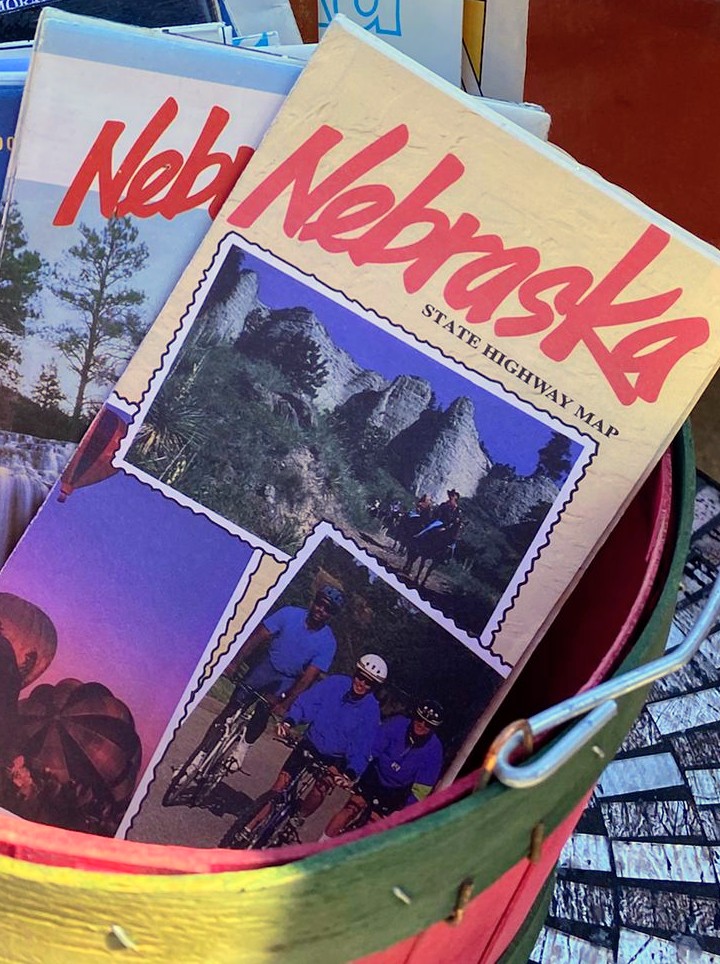
F
Fruit Juicer
Made of aluminum, "Fits over a cup, strains as it juices" was on the attached Foley Company card when this was sold in the 1950s. The company was in MPLS, MINN. (Minneapolis, Minnesota). The traditional name for a fruit juicer is a "reamer." (Foley 1950s; 4" round x 8 1/4" x 2 1/2" high; $ .25) (Click to enlarge the photos.)
H
Hot Plate from one of the burners of an old wood-burning stove
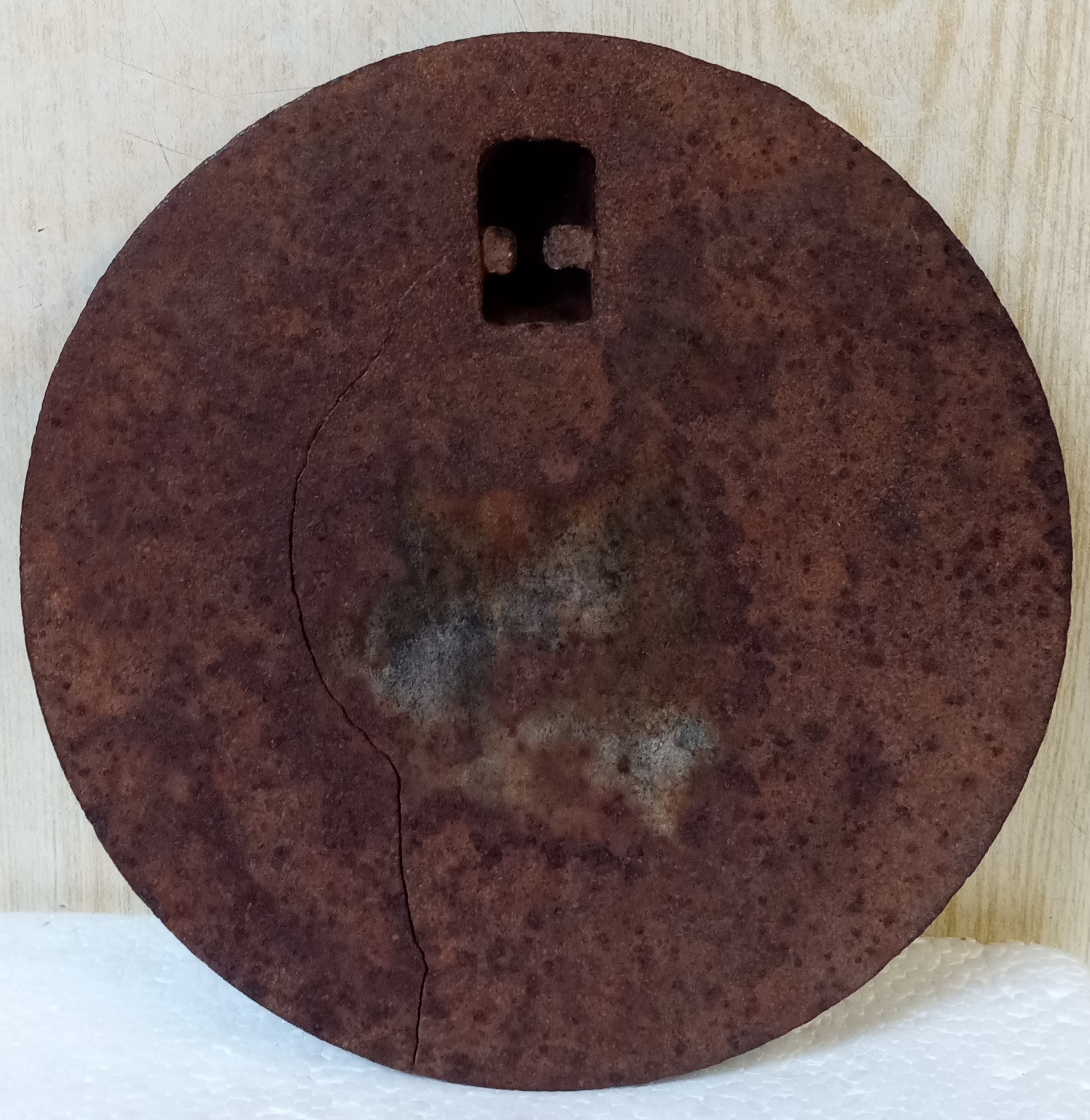
A round piece of heavy iron . . . I wonder what happened to my one grandmother's wood-burning stove, used up into the 1970s. I remember Grandpa opening up the drop-down or a swing-door on one end to insert the pieces of wood he took from the "wood bin" behind the kitchen door, in order to keep the fire going -- the main means of daytime heat in the house. The bin was built in the wall between the enclosed, non-heated back porch & the kitchen-dining room.
So early on in the Junk Jaunt trail, a man had this burner plate for $1.00. Memories of one of the grandparents. There'd be a "handle lifter" to fit in the hole (left photo) to lift the "hot plate" & stir the fire below. (8" round; $1.00)
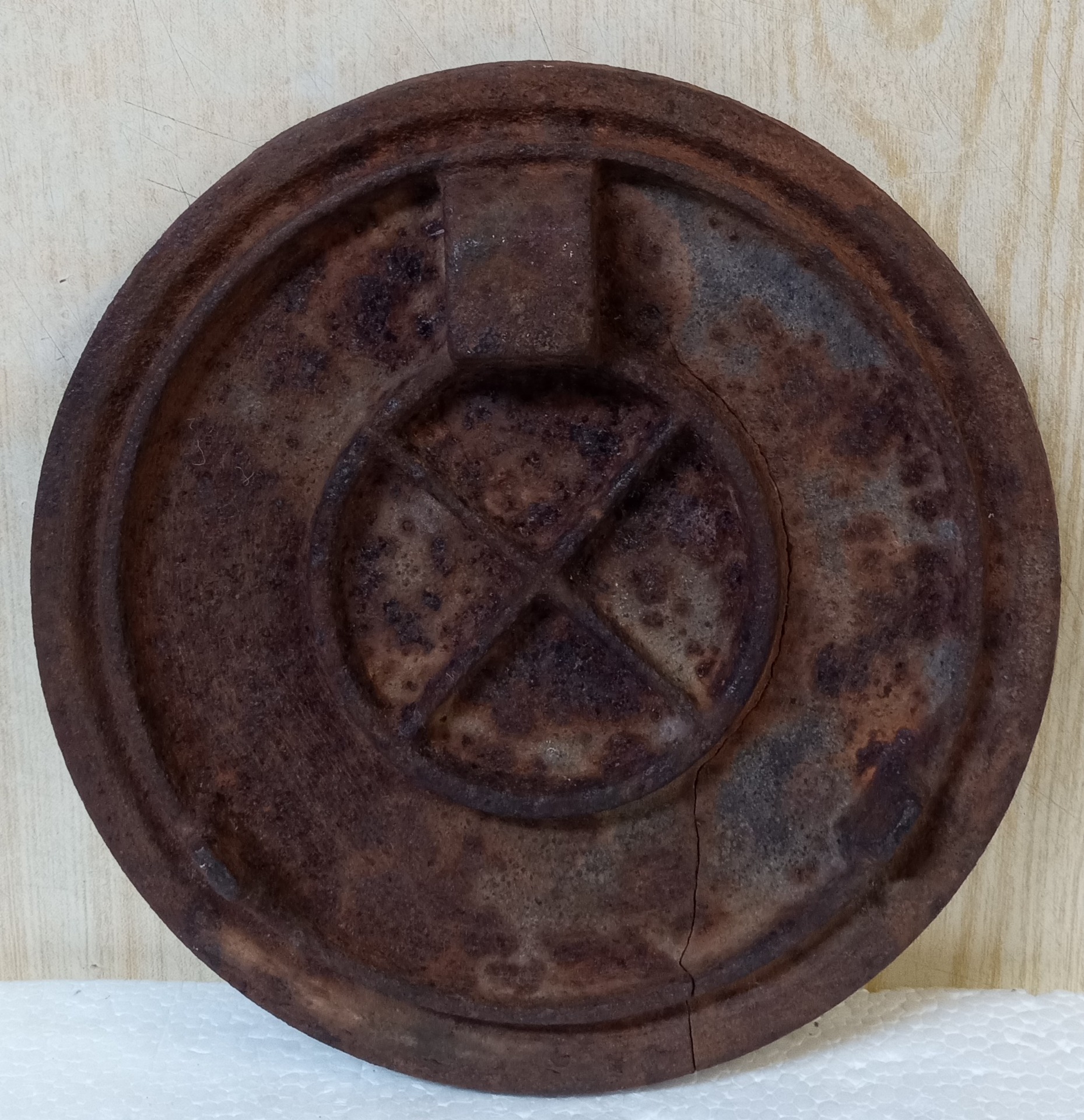
K
Knife / Knives



Knife, double-sided, ripple~scalloped blade (not sharp), possibly for fish scaling?; "stainless Germany"; wooden handle originally painted green; (7 3/4" x 1/2"; in a $10 bundle of 16 items)
Trekking Along
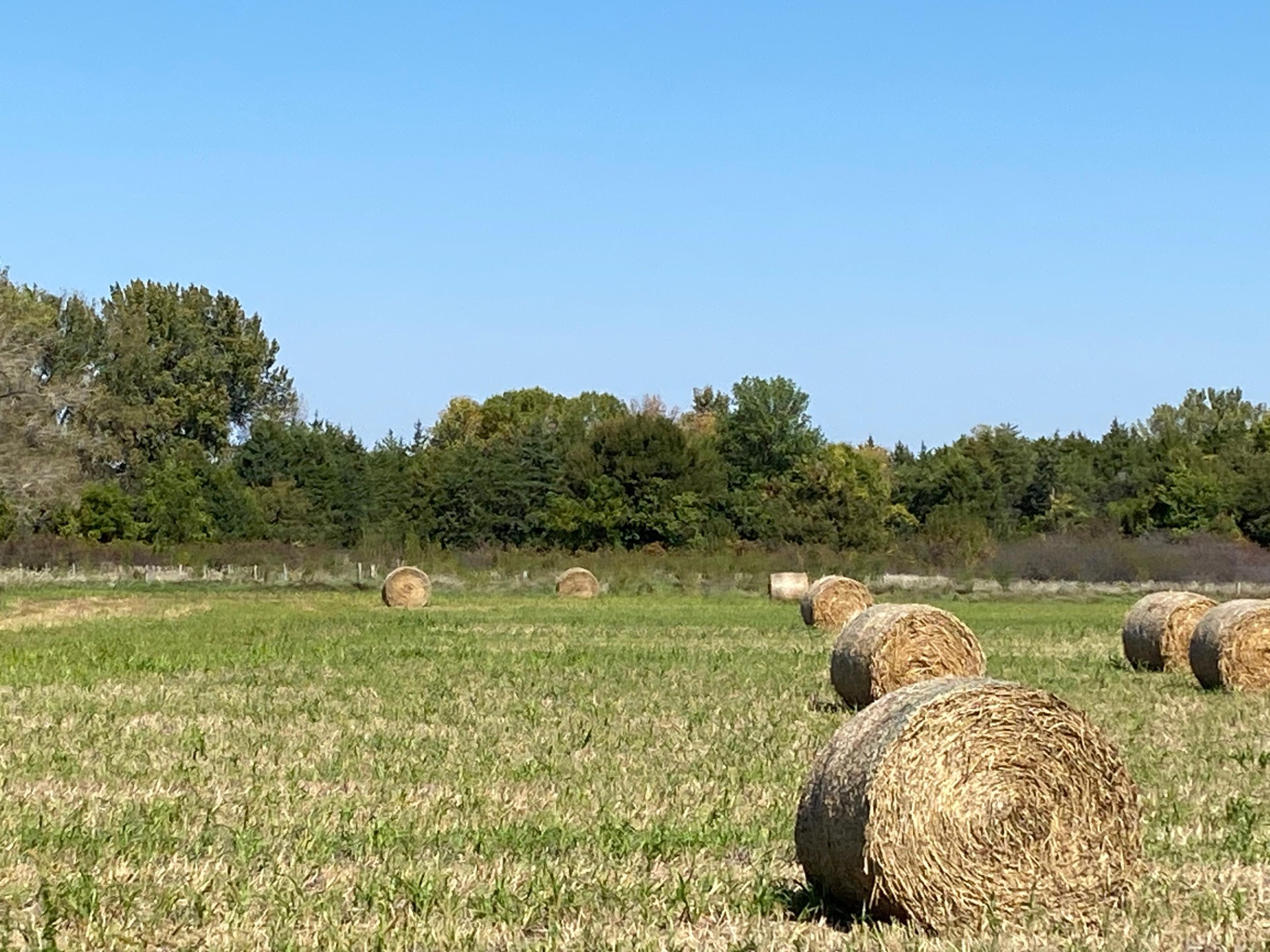
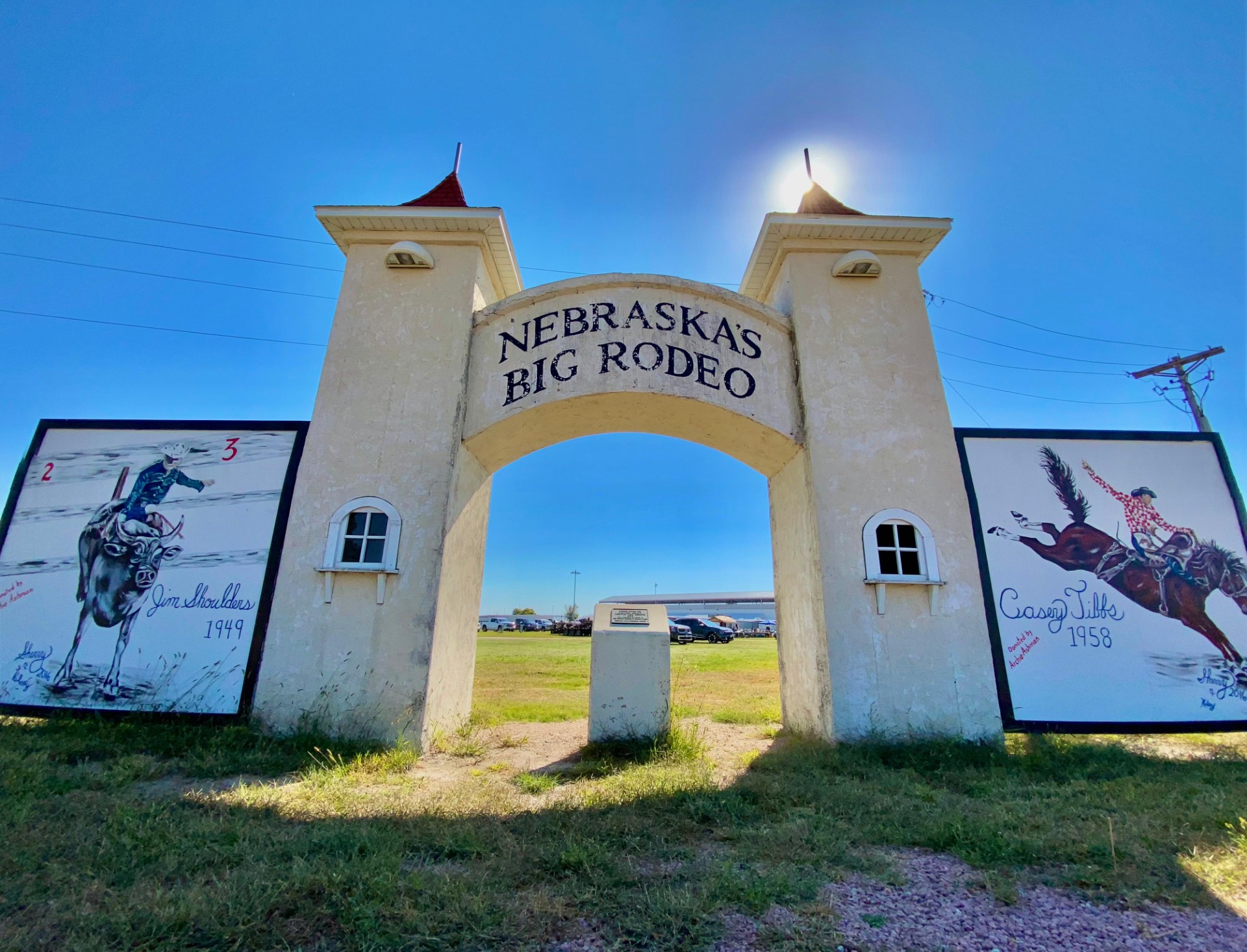
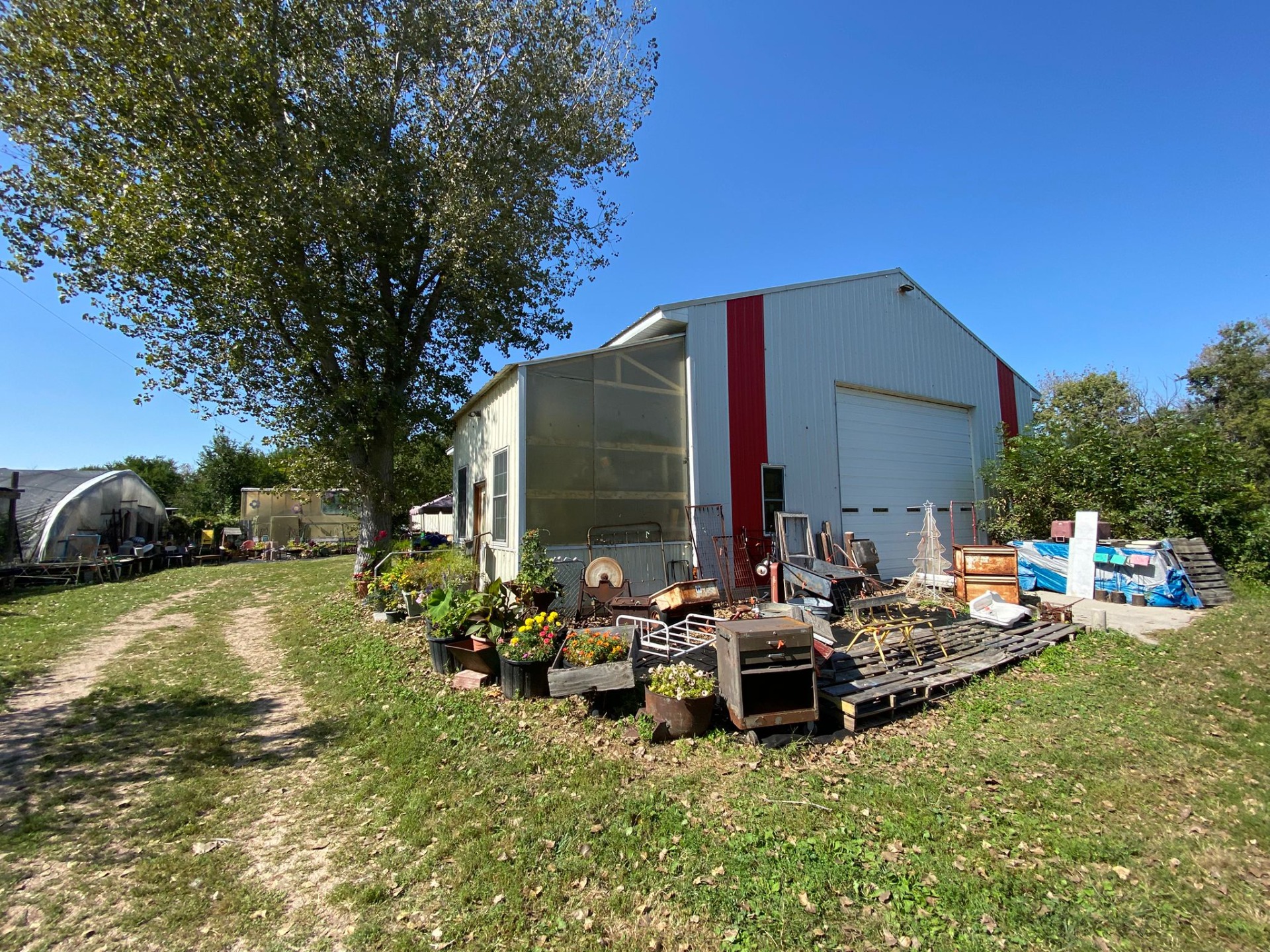
M
Maple Syrup Jar
Growing up in Wisconsin, one of the two main maple syrup-producing states, on weekends breakfasts were often pancakes, and especially potato pancakes which a nearby church even used as a festival event each spring with the maple syrup season (& 65+ years later the community still does). We were never short of a-gallon-at-a-time of "the real stuff☺❣" So when I saw this jar, "Oh, what memories!" It was the container in every restaurant (& maybe some homes?) & only for maple syrup. (glass; 3 1/2" rd., 5" w/handle, 5 1/2" tall; $1.00)
P. S. Some of those 2 1/2" fried pork sausage links, a chunk of cheddar cheese, a dollop of butter melting on the top center of the stack of 2-3 pancakes, & maple syrup running over them onto the plate, is a pancake breakfast👍😋!!!
Masher - Lifter ~ Melon Baller (utensils)
1) A masher-lifter of some sort; faded green wood handle; (2 3/4"w x 9 1/2", 1/2" x 2" flip; in a $10 bundle of 16 items)
2) A single scoop melon baller; faded white paint on wooden handle; (5"; $ .50)
Masher ~ Potato (a utensil)
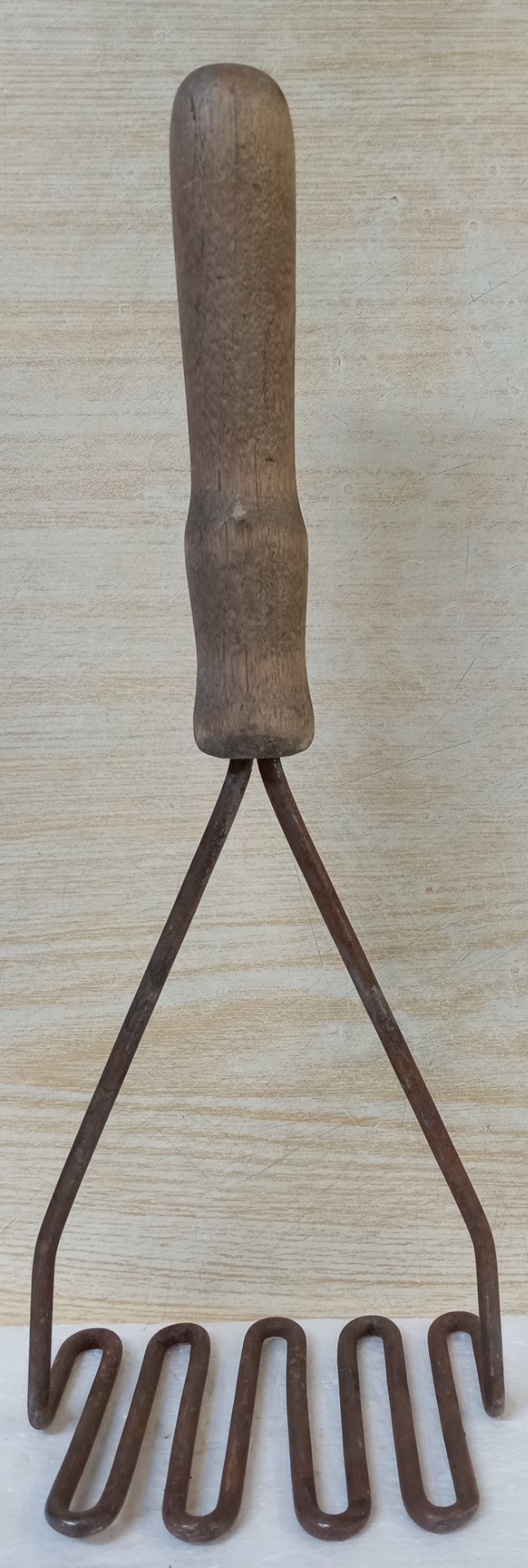
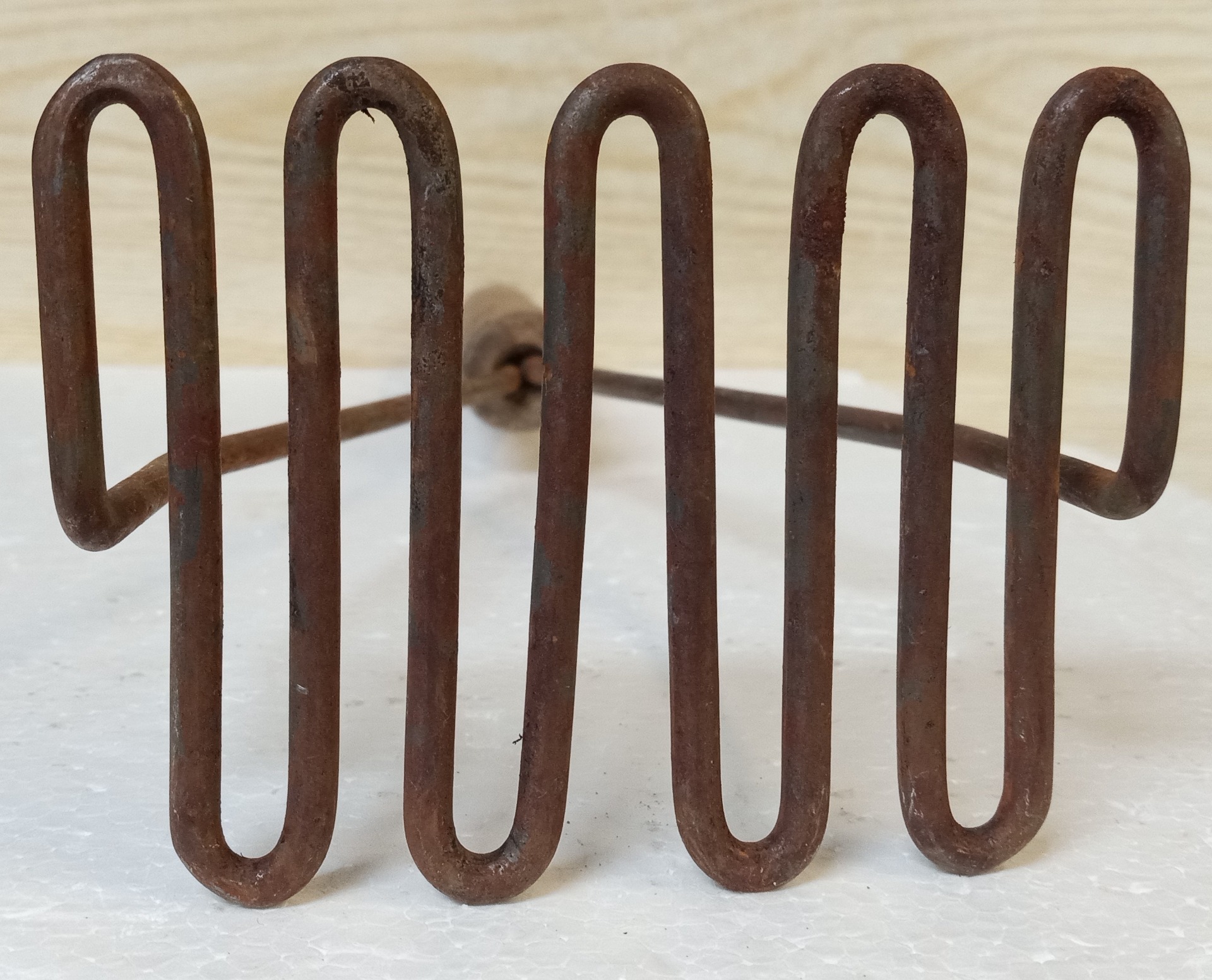
This is my recommended type of potato masher of all the varieties I've seen (but buy a new one & just use these rusty ones for display!). It is so much easier, faster, & better than the solid, round, wooden "stomper" type we had on the farm! (3" x 4" x 10 5/8"; $ .65)
Milk Bottles & Caps
On the farm, we drank the "whole milk" from the cows (refrigerated in these type of glass milk bottles). Cream would rise to the top . . . maybe 1-2" in the bottles with the narrow necks. When you wanted to have cream for coffee or tea, or hot oatmeal, whipping, recipes, etc., you'd carefully pour it off or scoop it out. Otherwise, you just shook the bottle of milk to mix it, & we drank it. Also, it's why so many old recipes call for cream. The "up to 75%," heavy, "country-folk population" in this country, 75-150+ years ago always had it available, even if it was store bought (very affordable). Today, after decades of first 2% (when the kids were growing up), then 1%, & now skim milk for many years, a swallow of "2% or whole milk" tastes like cream to me . . . it's so thick!
Regarding the bottle caps, I have no idea where Mom got new ones when needed as we never bought milk, or even new bottles - - maybe from the local "cheese factory." All farmers' milk got hauled to a "cheese factory." It was never called a milk factory, or milk plant, etc., . . . but always "cheese" because that was where all the cheese was made from the milk. When I went to school (early 1950s) & had a container of "pasteurized" white milk (mid-morning break, a half-pint carton, 5¢), I gagged with the horrible taste, so I only drank the chocolate milk as it covered up the pasteurized taste!
N
Newspaper - December 5, 1959
Got to talking with Kevin, wondering what he was looking for when going through a stack of these newspapers. I told him that we got the Wisconsin Agriculturist all of our farm years. That paper had its beginnings in 1877, and is still being published today by Farm Progress. Amazing! After I told Kevin about the historical preservation of this museum project, he showed me that the Nebraska Farmer had a recipe section, & said I needed to buy a copy for the museum archives👍. Click on the photos for a closer look: Robin Hood Flour, Mother's Best Flour, Fleishmann's Yeast, and Festive Yuletide Foods. I wonder how many other states had a "newspaper honoring farmers for their hard work, dedication, farming success, and exemplary leadership?" (10 1/2" x 14 1/2"; $5)
Nut Grinder - Glass Jar
I had the hardest time figuring this out . . . how to chop the nuts into the jar? There is no "cup holder" above the chopping blades, & no way to attach one (if it was a missing piece). Along comes a young guy, looks at it, says you put the nuts INTO the jar, turn the jar upside down, & chop them into a bowl or over your food!!! I couldn't believe it! Who in the world came up with this "reverse method" of all other nut grinders? And WHY? (Doing a search online, I see that originally there was a domed cap or cover that is missing.) "Fed Housewares - Chic IL 5 - Nibot Corp. (3 1/4" rd. x 5"; cover w/handle 3"; $4)
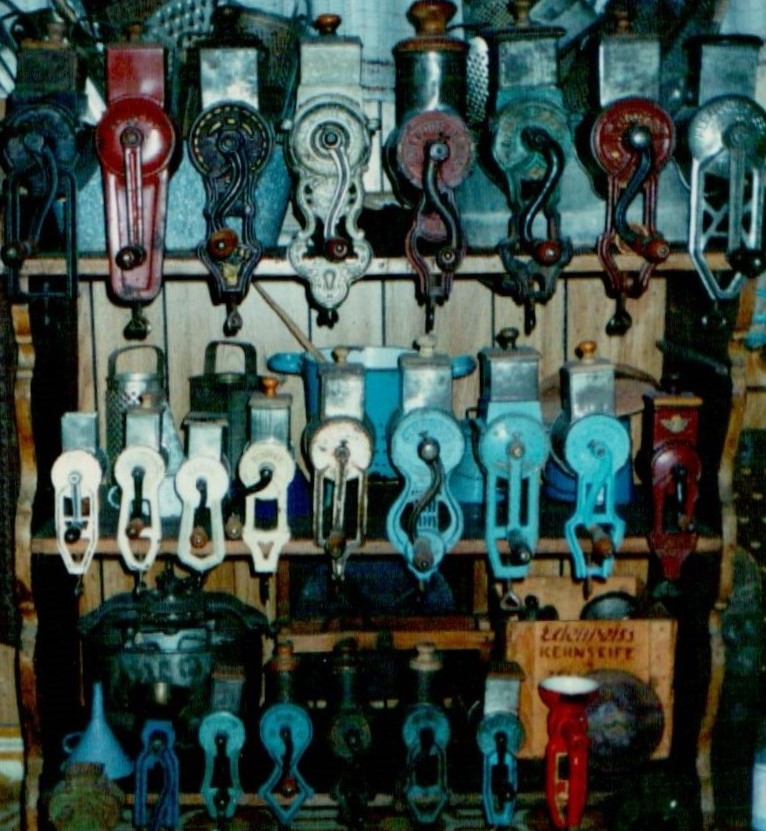
Nut Grinder - Metal; Clamp on something -
When buying in the German flohmarkts almost each week for 3 years (1988-'91), my face became familiar to a lot of the regular vendors. How I wished I could have spoken more German, but there weren't any of the opportunities to learn as there are today! I was one of the very few Americans who "got out into the everyday German life," as you could live within an "American military community" your entire time if so desired! (What a loss!!)
So, about 2+ years into my time, a vendor who spoke English invited me to his family home & showed me a very large Dutch antique-collections book. The 2-page centerfold was two long
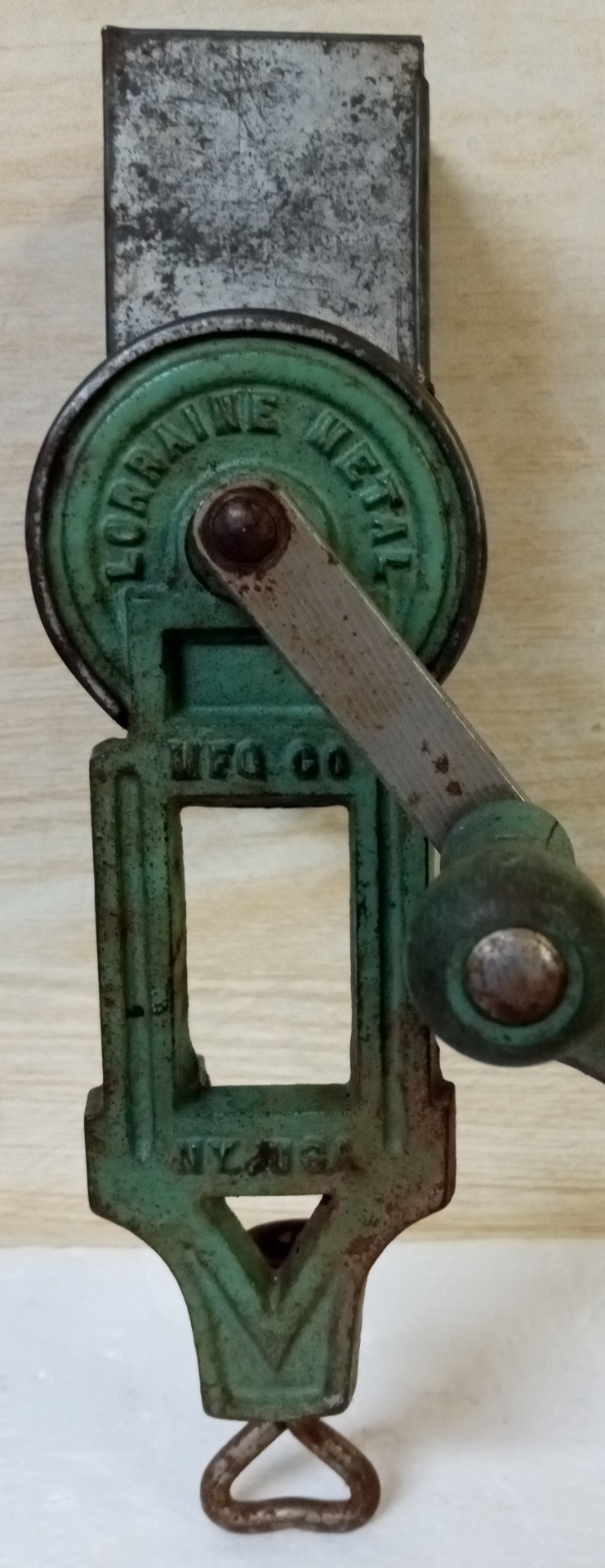
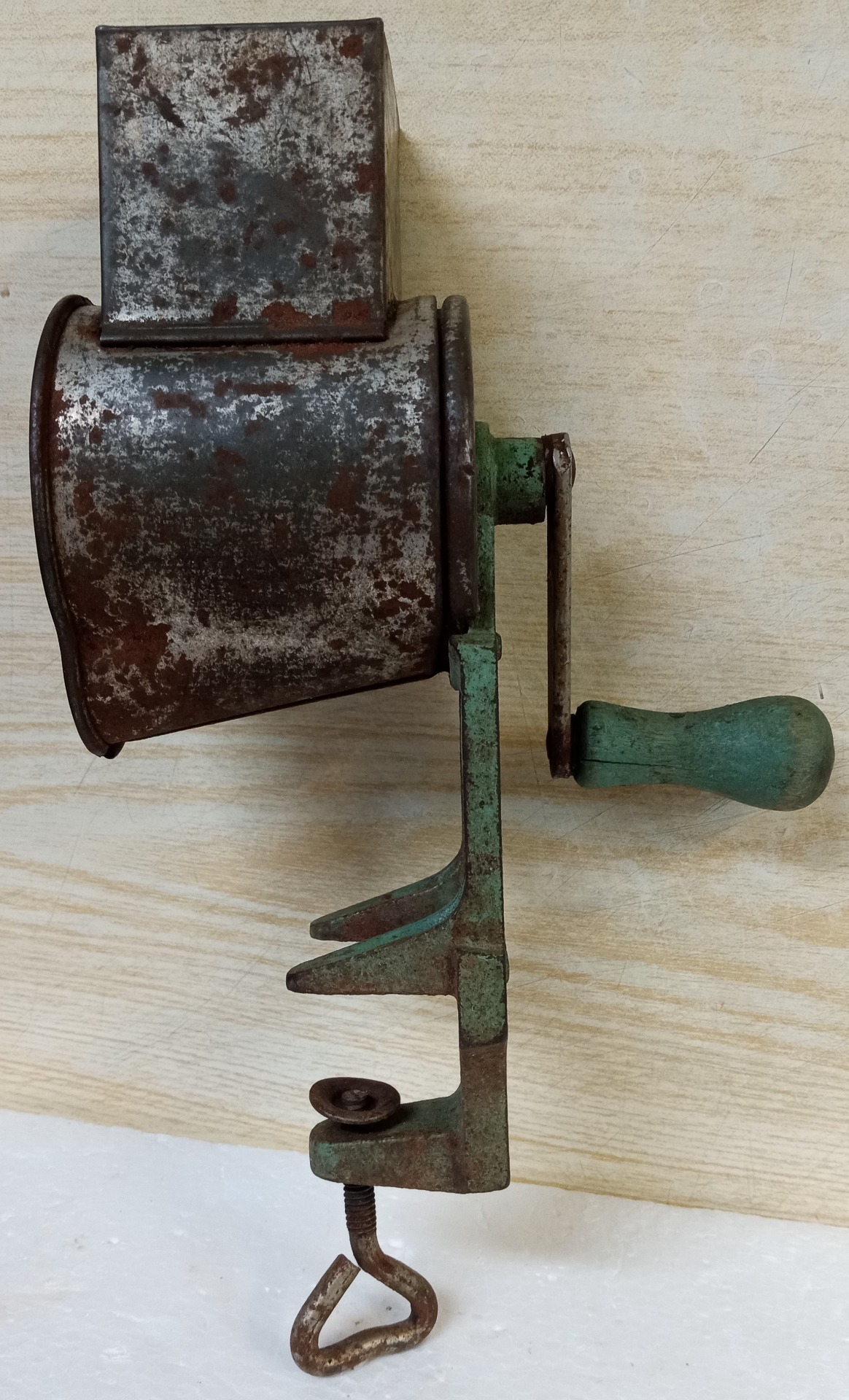
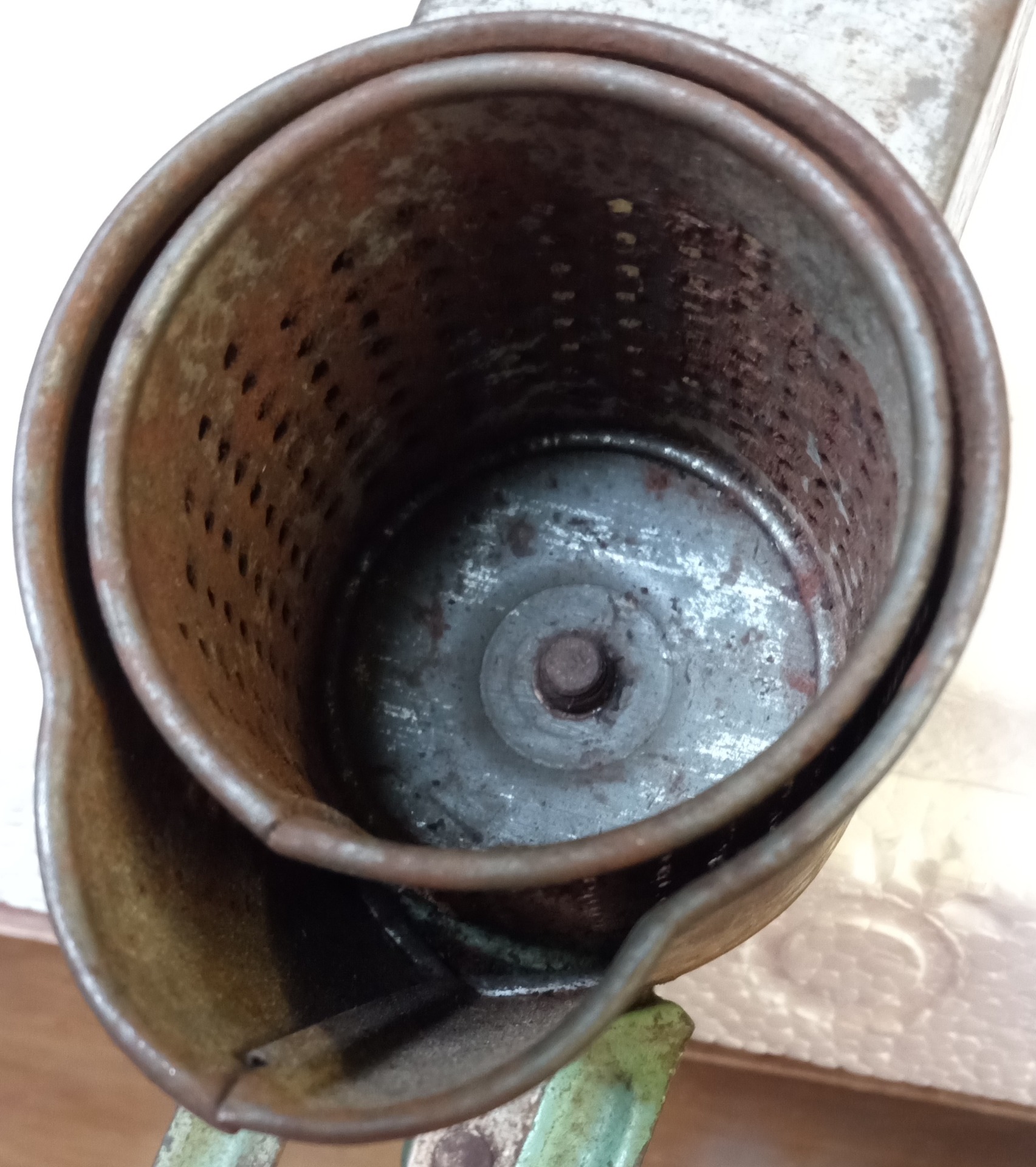
shelves filled with these nut grinders, and each had a different name - mostly women! It was astounding. I had no idea. Not having bought a one until that time, I was then on the hunt & within the rest of my time there, & within my bargaining budget, I got enough to fill up the shelves of an old wooden wash stand I also found ($20 - above), specifically to display these "clamp on" artifacts. And I figured that when the shelves were full, I'd be done buying them! Also, I never bought one without the wooden "pusher" in the feed tube. Then seeing a new style one day with a round, shallow, cup-like feed tube (red, bottom right), I asked the vendor what it was for, & when he said, "Mohn," I understood - - a poppy seed grinder! Who knew?!? (The blue one, bottom left by the upside-down funnel, has a brass cup.)
I just remember the most expensive one was DM25 -- it was small & had the word "BABY" on it -- very different ($16.50). All these years back here in the U.S. I've seen a few of these in Antique Malls (& the wooden pushers are usually missing & they're quite $$$), & usually they're called "vegetable choppers" (but are in this nut grinder style, not like our common meat grinder). Then here was one on the Junk Jaunt - by the Lorraine Novelty Mfg. Co., New York, NY, 1950s or earlier. (green; 8 3/4" x 2 3/8" on the cup end x 5 1/4" wide; no pusher, but only $2) It definitely needed to go home with me even without a pusher!
P
Pans
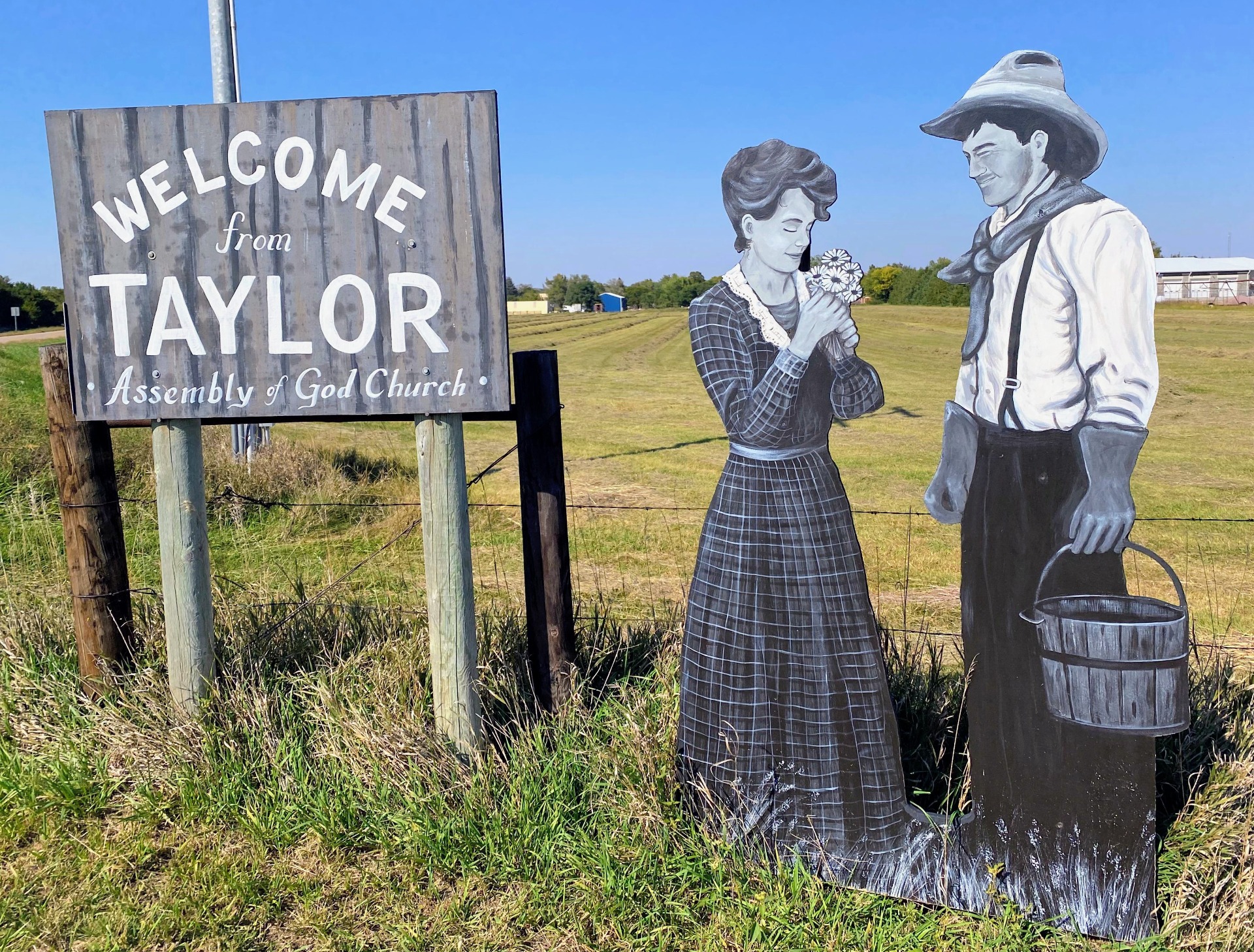
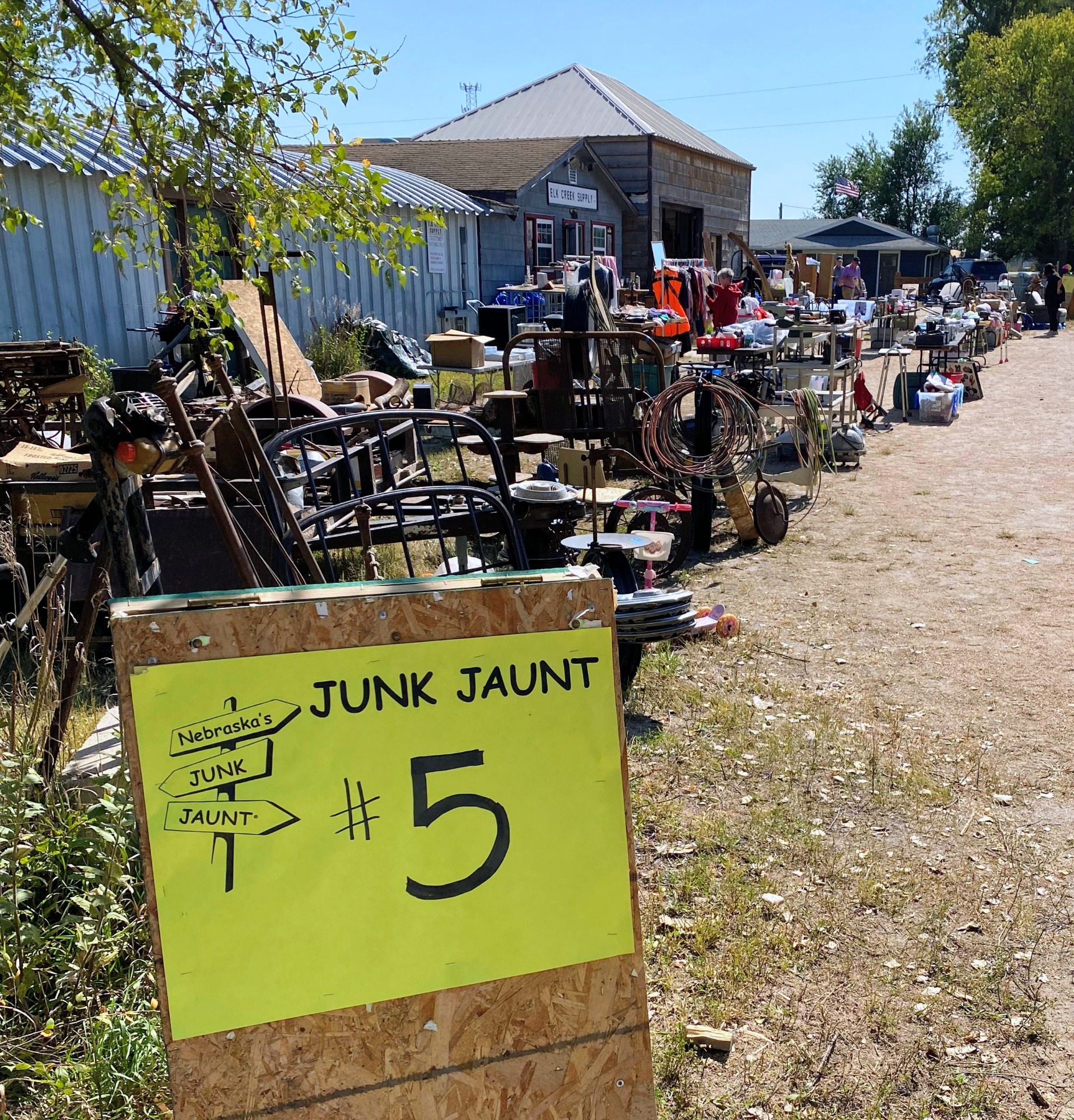
We got to the town of Taylor, one of the three, memorable-by-name stops along the route . . . why? Because from the "Welcome to Taylor" town sign, throughout the streets, there were nostalgic, life-size cut-outs of people from place to place. It felt as if there was activity going on in that place, & people walking around where there weren't any, but it was truly the feeling of being welcome in "home town America."
Right on the Main Street going into town we stopped & met Mickey (he said, "Like the mouse!😁") & walked through his long "antique" place of 1,000s of old bygones, indoors & out along the street (#5 on the left), & exchanged a few stories. We followed the signs & bought kolaches which I've known of from my grandma's baking days. Like I said, "This town felt like going back home."
It was where we bought the deer antlers & my actual, real (not a facsimile) 2nd oldest cookbook of (c) 1908-'13 from a family with roots of living in Taylor for 165 years already! Then there was a huge, sprawling area linked to a "Quilt" place with tables "runneth over," inside & out, & I picked up this set of 4 old crusty bread pans for $2 (between 4 3/4"W. to 10 3/4"L. to 3"H.), & the 2, just as old, 9" sq., shallow tart or biscuit or roll pans. Bundled all together at the end, there were 16 odds & ends with the pans, & Wyatt (Are we in the West?😉?) said, "How about $10?" A done deal🙏!
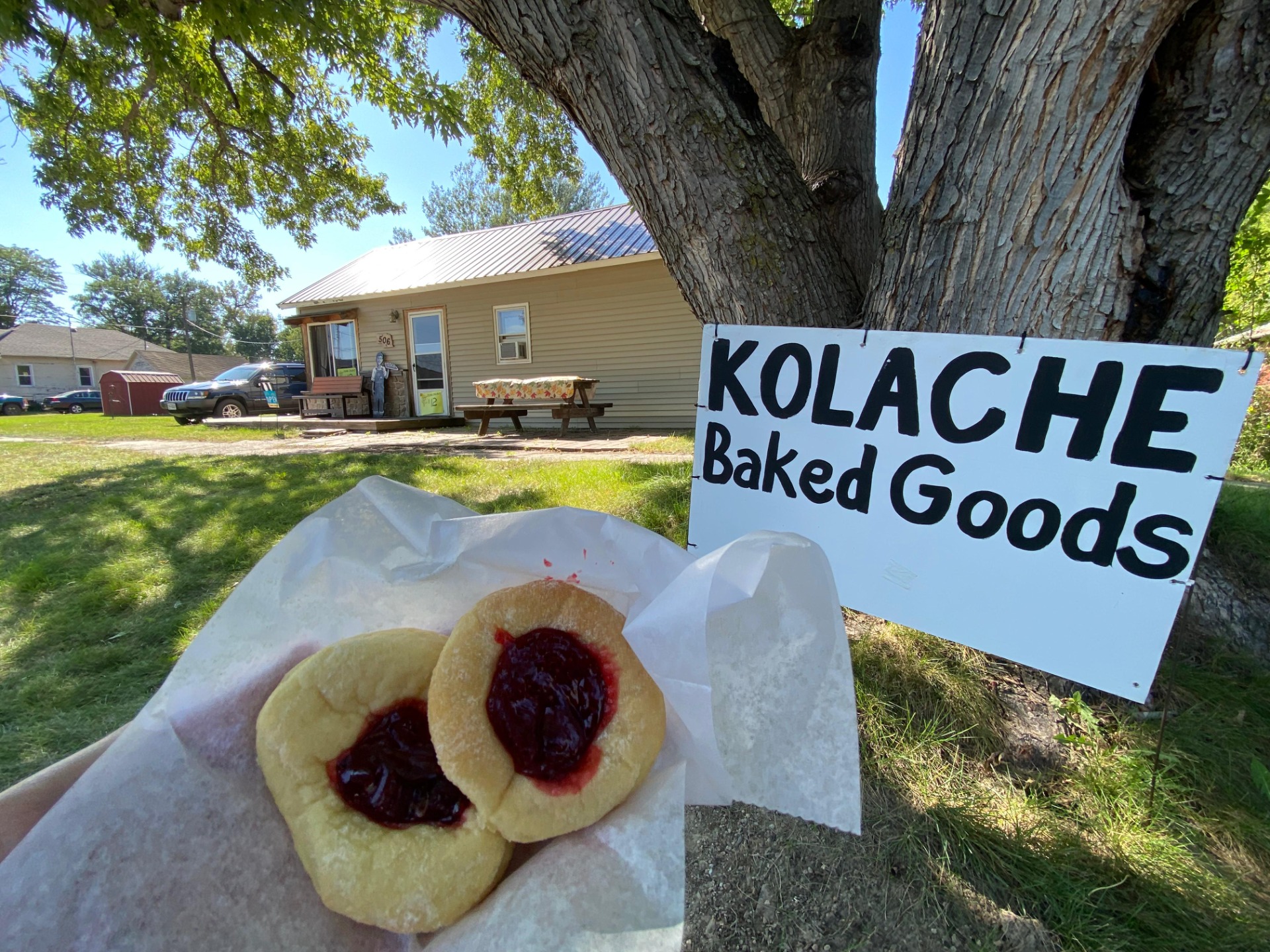
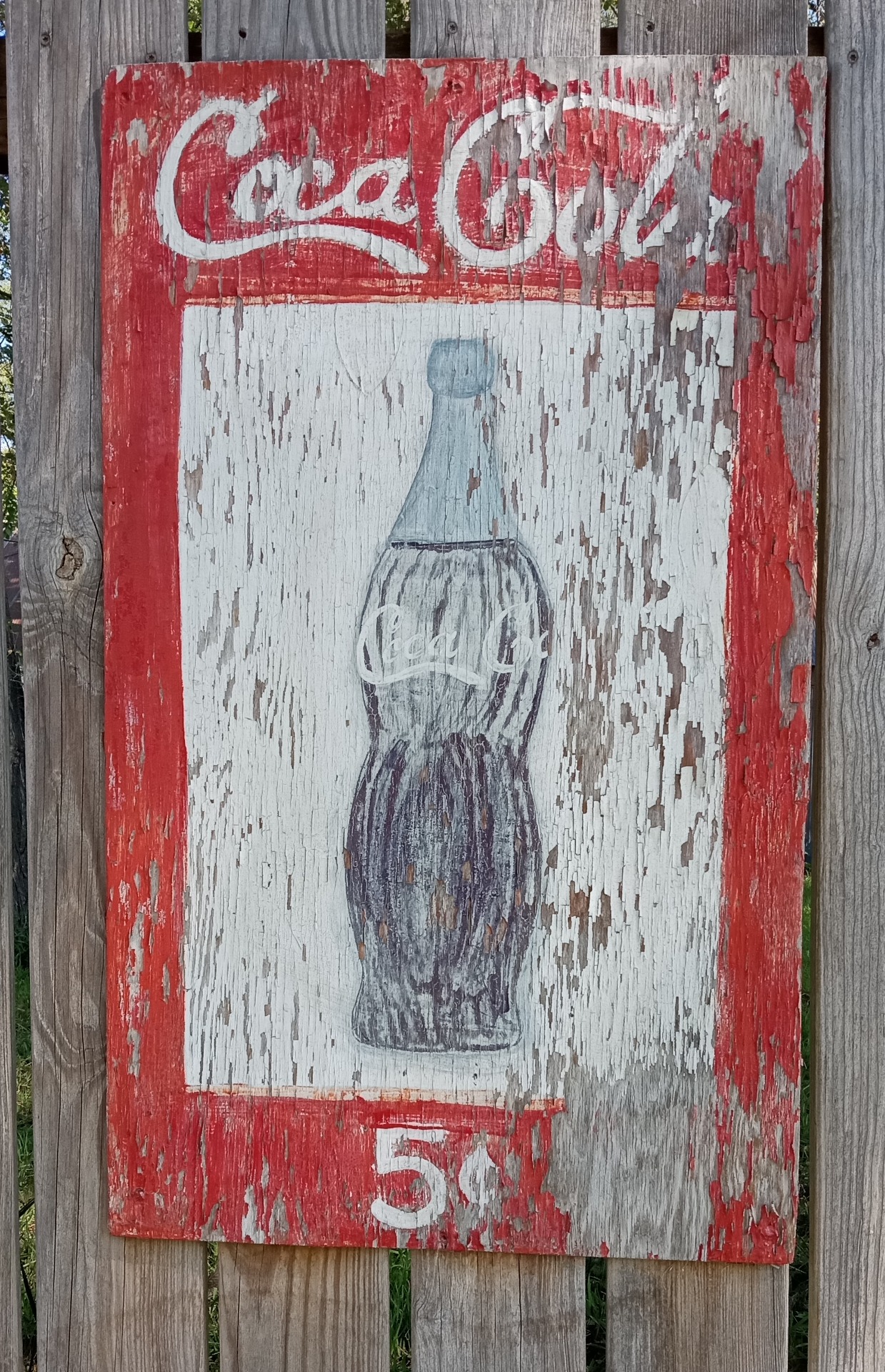
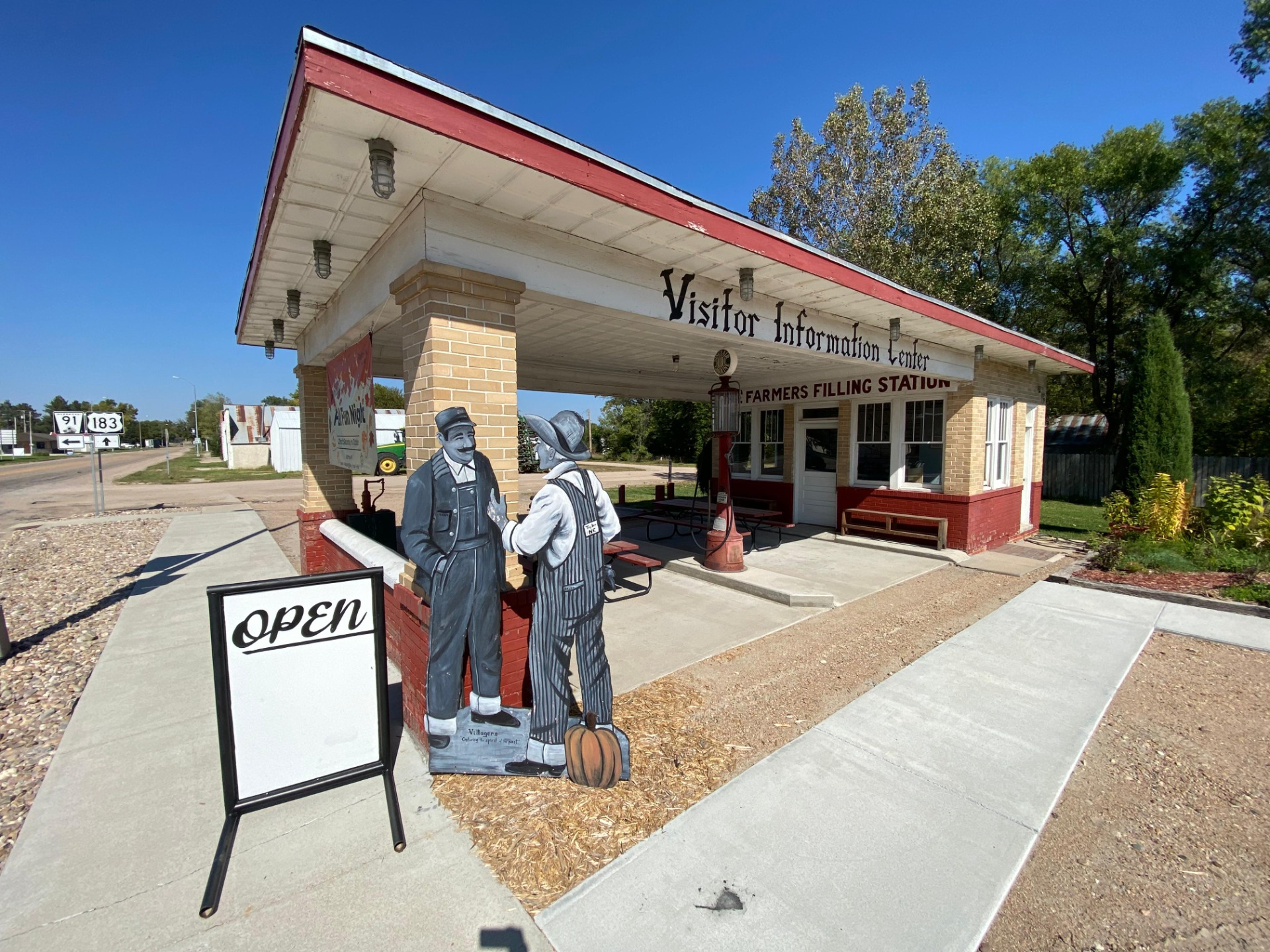
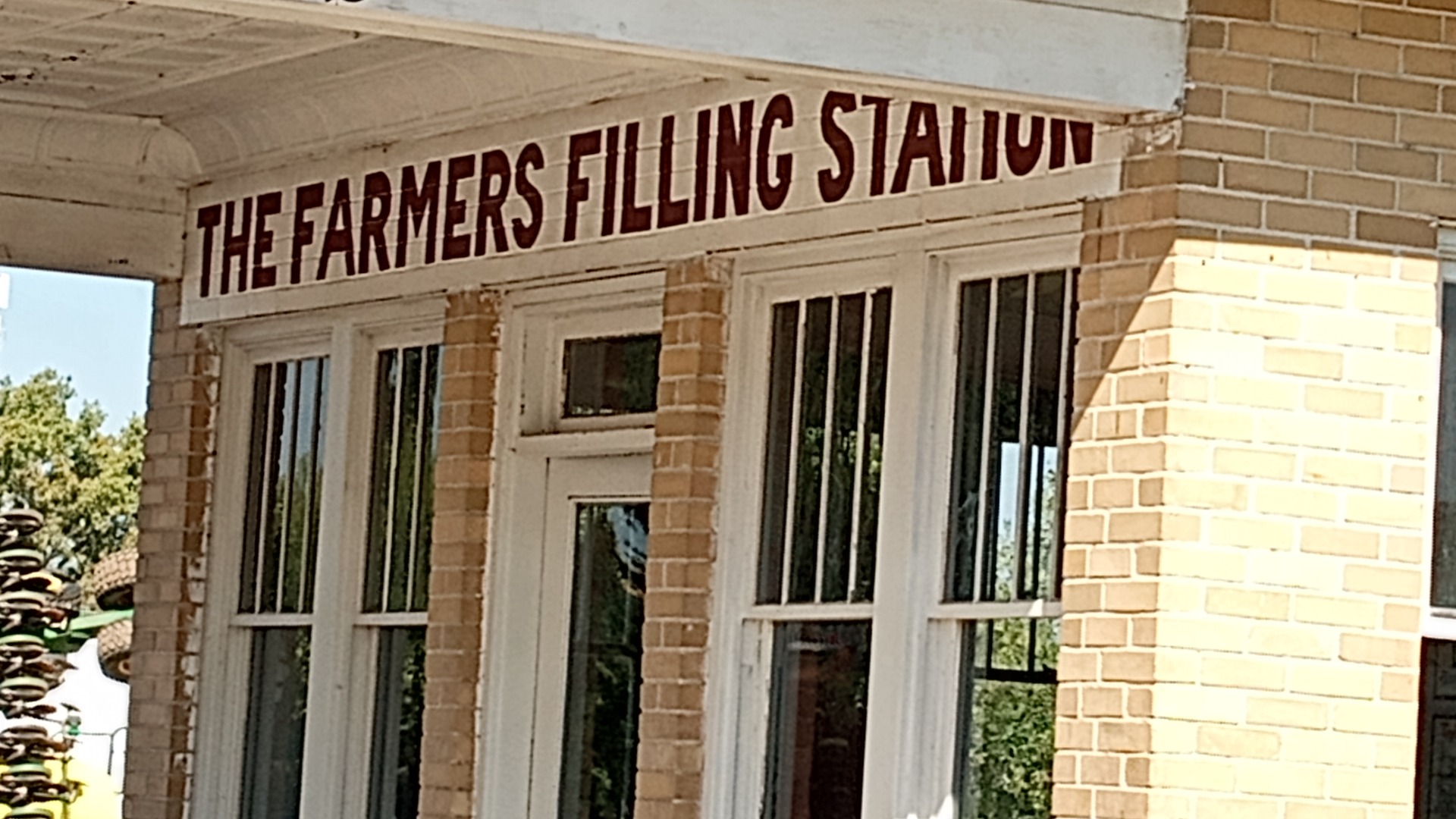

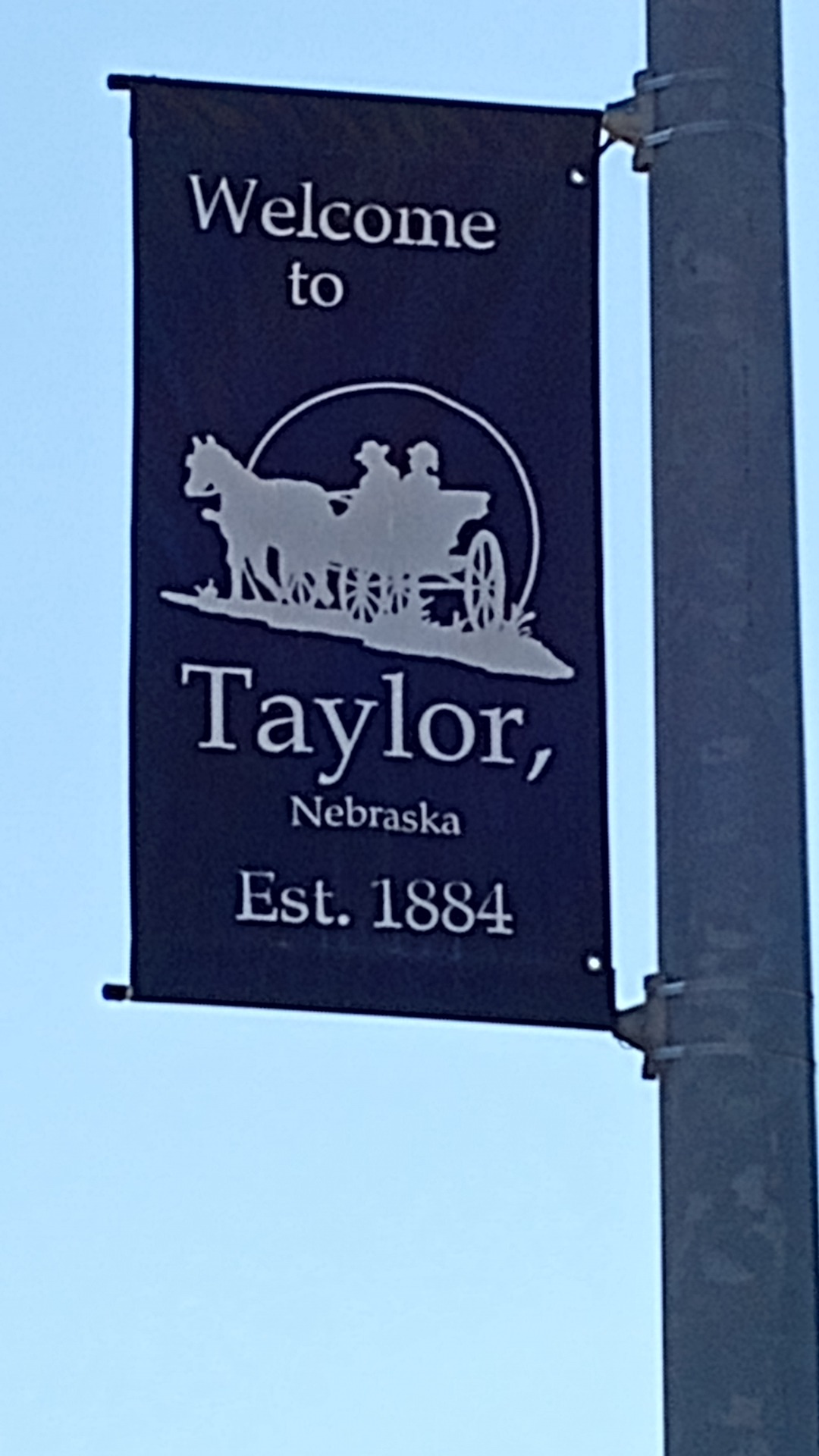
Pastry Cutter - Pastry Wheel (utensils)

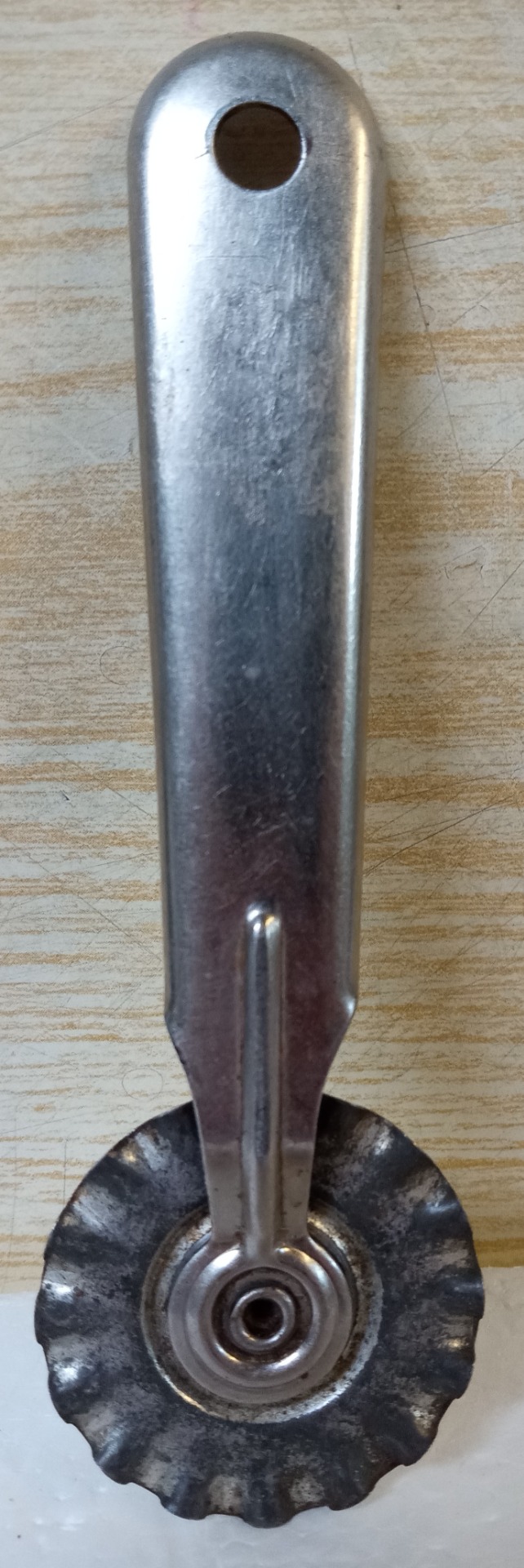


Odds & ends of utensils . . . this time it's two very different pastry wheels. The left one, "Made in the U.S.A." is two wheels on the end with a white, plastic handle. (PLASMEM'; $ .50)
This other tin one is very light and thin. (4 5/8" x 1 1/2"; in $10 bundle of 16)
Peeler - Apple Corer (a utensil)


This is an absolute "must have" in my kitchen, utensil drawer. It's a difficult item to use as a peeler, but as a corer, it's indispensable. (A & J Made in the U.S.A.; wooden handle; 6 1/2" x 3/4"; in the $10 bundle of 16 items.)
Gettin' on Down the Road
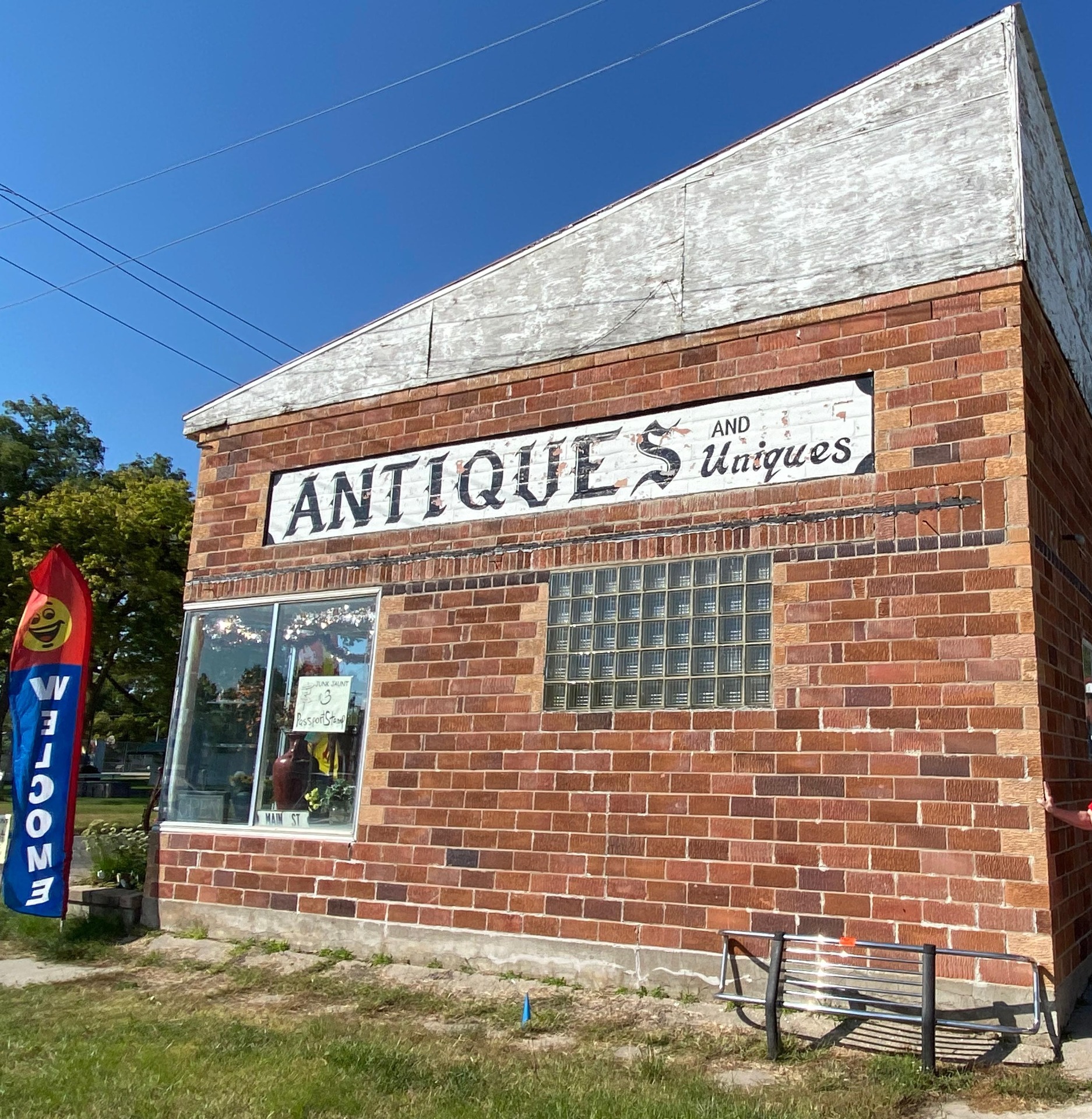
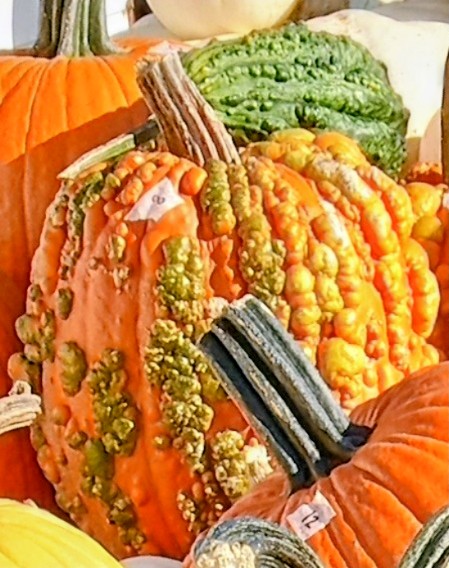
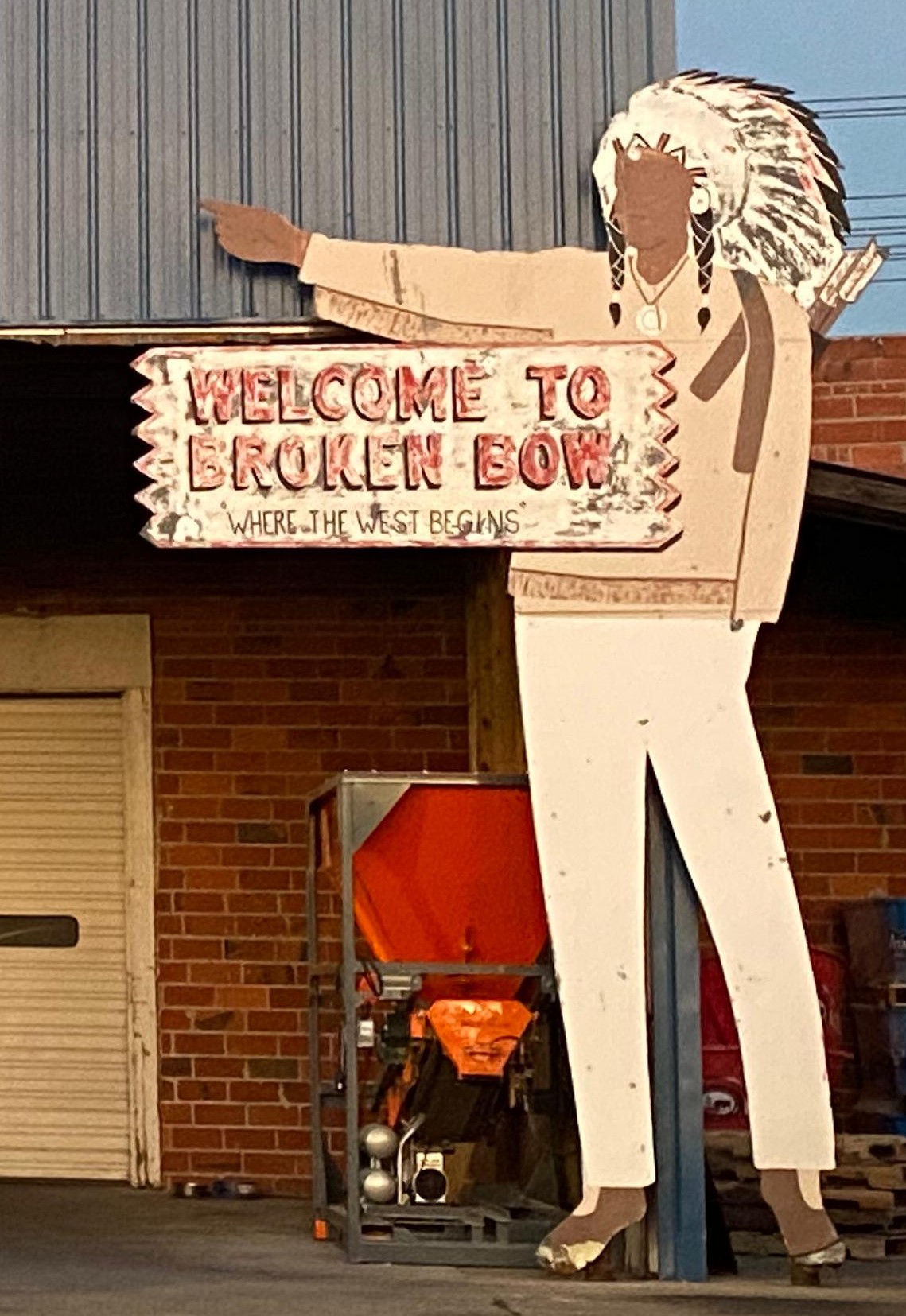
R
Recipe Books
You can click for an enlarged page & zoom in to do some interesting & fun reading of the "old time" days, & then be thankful we are living at this time and age! And tell the Lord thank you for your grandmothers of this early 1900s' day, & if you don't know about them, see what you can find out from "the older folks" in the family before they, too, are gone. It's your time to begin to document some family history, & if interested, is there a treasured recipe book that's been handed on-down which could have your name in it for a "someday," if not right now?
~ the Beginning of the Rolling Sandhills ~
S & T
Skimmer ~ Strainer Spoon ~ Long-handled Spoon/Ladle ~ Tongs
1) The way you hold this brass skimmer/strainer, it's as if the handle is on upside down. Can't figure this one out.
2) A grey graniteware, hook-handle, spoon-type strainer, or cream skimmer; (4 3/4" rd. x 10"; $1)
3) An oval spoon-ladle, seemed as if enamel was on an iron substance because of the rust. (10"; $1)
4) Spring action tongs; "A Little TY from Northern Coal Co. Phone 5-5011"; (9 1/2" x 1 3/8" wide at top x 7/8"; in the $10 bundle of 16 items)
Spice Can or Tin ~ Safeway Crown Colony Spice, Safeway Stores / 1996
My method of measuring & photographing a tin is to begin with the cover. It will determine the basic shape and size of almost all tins. Then to photograph, begin with the seam on the left & go around the tin to the right, turning the tin clockwise. End with the bottom if there's some info on it. (1 1/4" x 1 7/8" x 3 1/4"; $1)
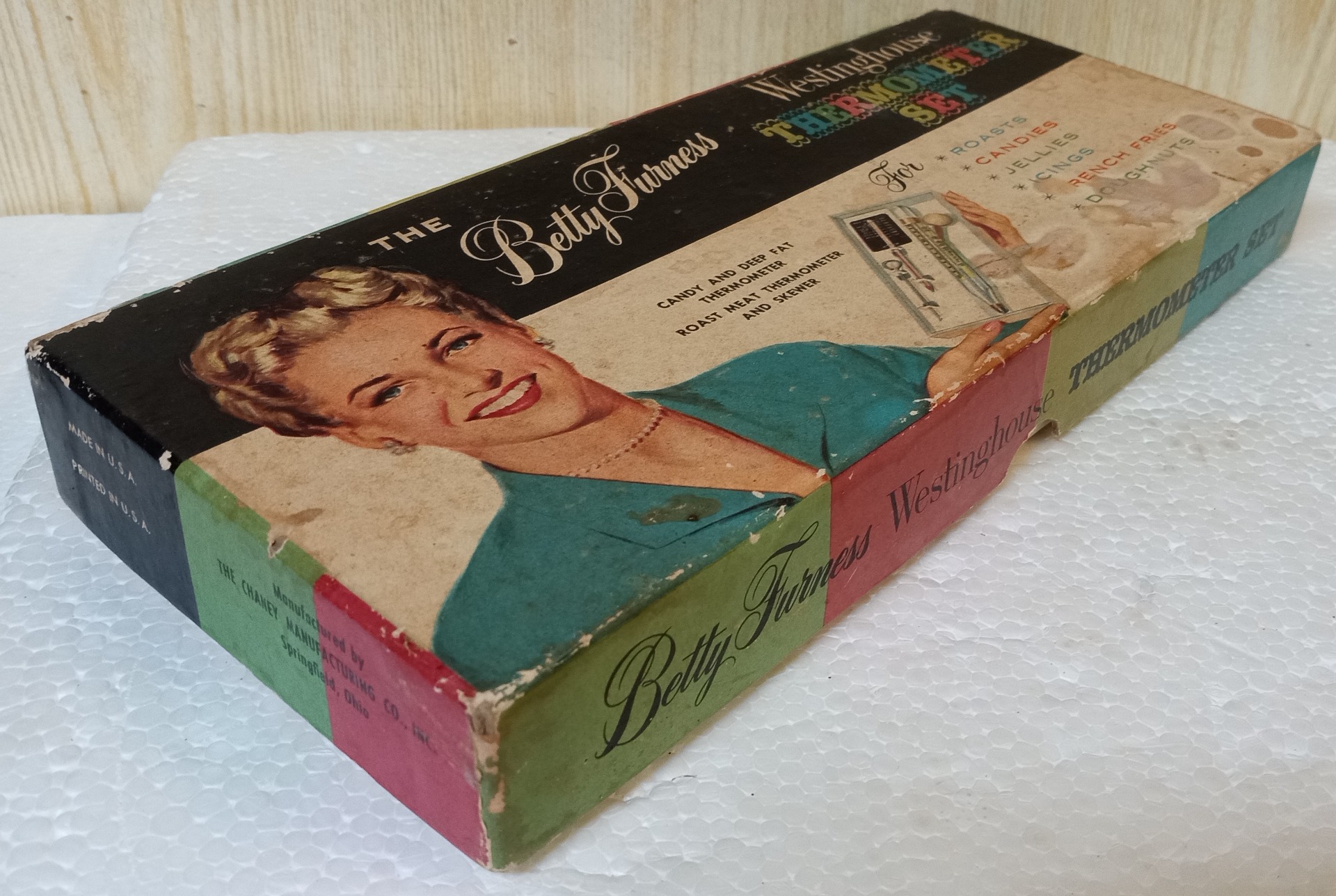
W
Westinghouse ~ Betty Furness, the advertising face of Westinghouse when T.V. came into households in the 1950s; a Thermometer Set in a Box. She is mainly remembered with the T.V. refrigerator ads.
Gotta Keep Movin' On ~ The Clock is Ticking & the Sun is Going Down.
AG/GRAIN
A SILAGE or HAY MOW / HAY (or even STRAW) STACK CUTTER

My main mission of grain-related artifacts is centered on preserving what Grandma used for home baking & telling about them, and all the while, giving gratitude for her life of home service in the past, or I wouldn't be here today to tell about it.
Those historic home baking artifacts were what I collected the most of during the 3 years at the German flohmarkts (1988-91 - just at the time when the Wall came down in 1989, & vendors went into the former East & brought out older items from the WWII & earlier days, besides the mid- & more recent 1950s-80s "stuff"). They represent the lives of all our ancestors who gave their lives to a career in the home, much of the time centered around home baking for the survival of the family.
Also, they are the main artifacts which are preserved in the "Bread Museums of Europe" that I went to in 2000 & 2010.
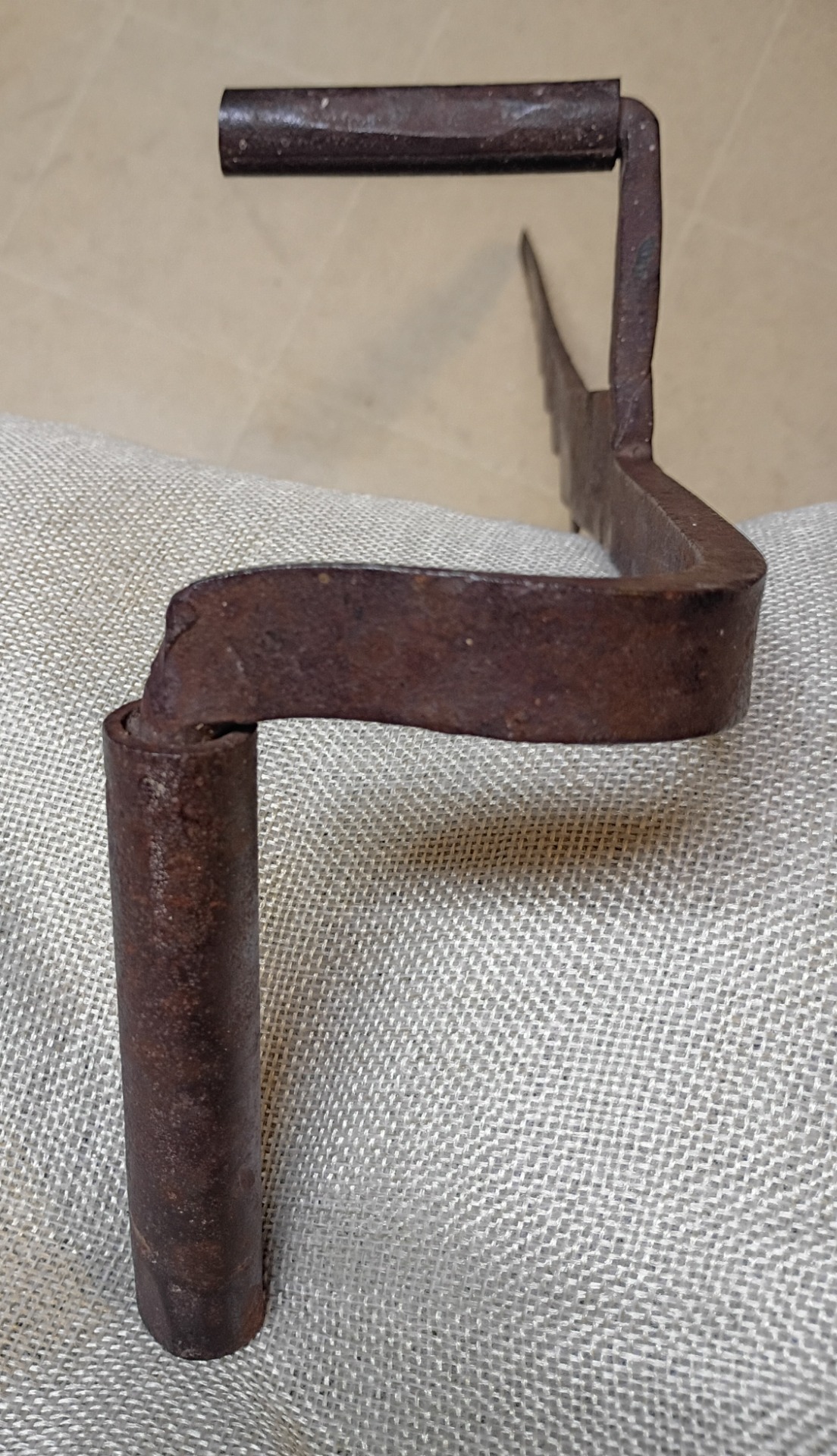
But the result of getting seeds into flour isn't in a vacuum. It all begins with grain in the ground in order to produce more, then harvesting, milling, & on & on with the "world of cereal agriculture" expanding from there in order for man to have food to eat. And we have many "agriculture artifact" collections & museums already in the USA preserving "this ag side of our history."
But even so, once in awhile an ag item of the days gone by, catches my eye, & for education purposes (this website), it seems important to add it in to help expand one's general knowledge . . . & preserve what otherwise might end up in a scrap heap!!! So it was with this excellent, hand-forged iron "hay / silage cutter" because so many people today have no idea of the work it takes for them to have food to eat!🤔!😏! Seeing an item like this helps to take everyone back to reality that even animals which we eat, need to eat.🙏

Day is Done, Gone the Sun . . .
I'm glad you came along for the day. It was a most pleasant trip!
I hope we can do this again next year👍🙏.
Please go up to the "3-orange-line" MENU, upper right, to choose your next link. Thank you.